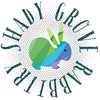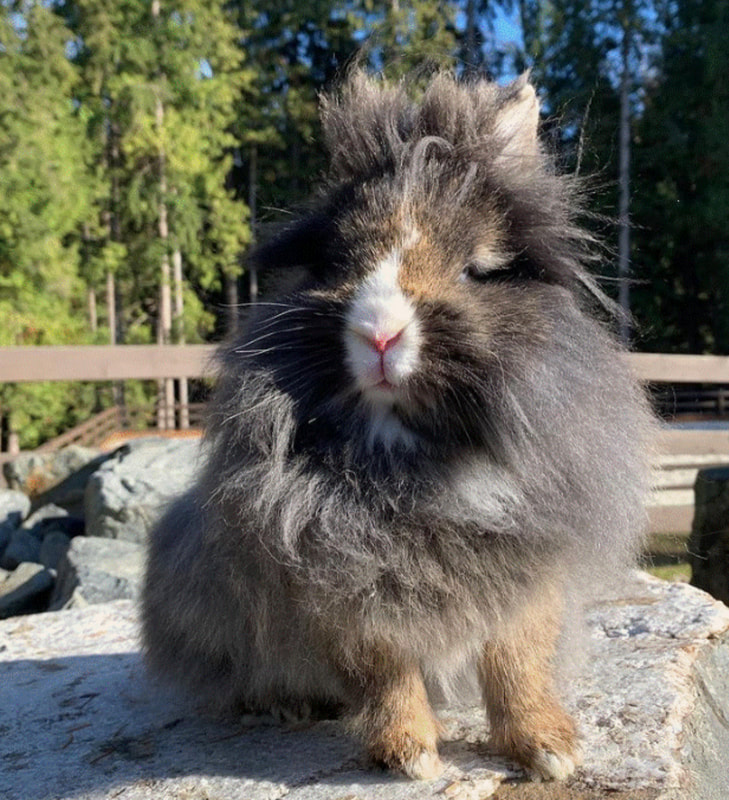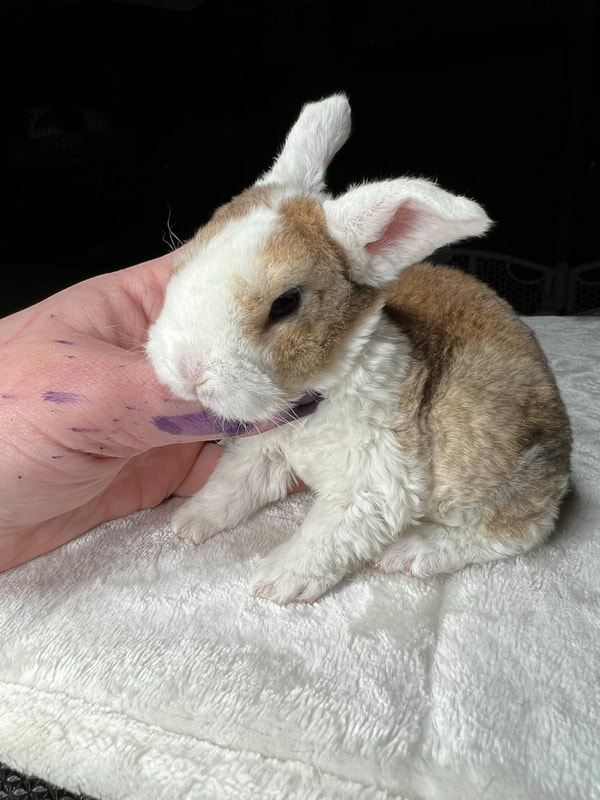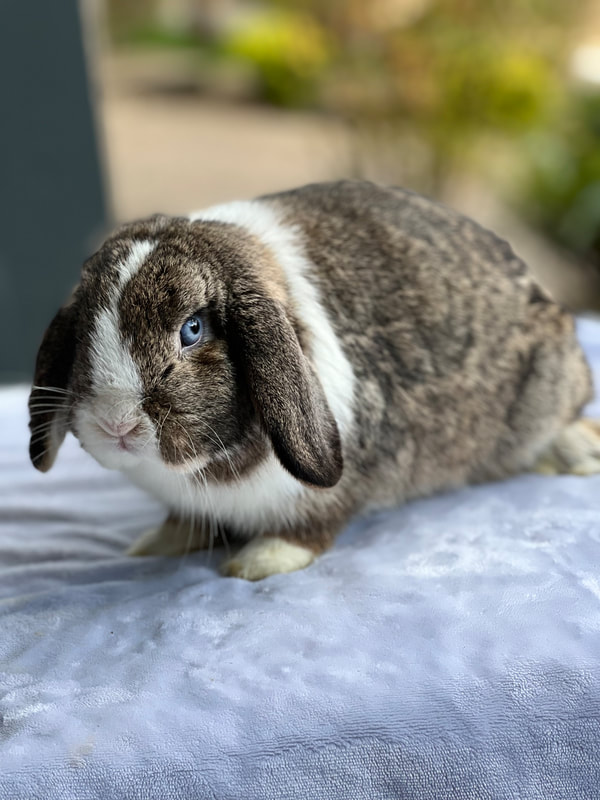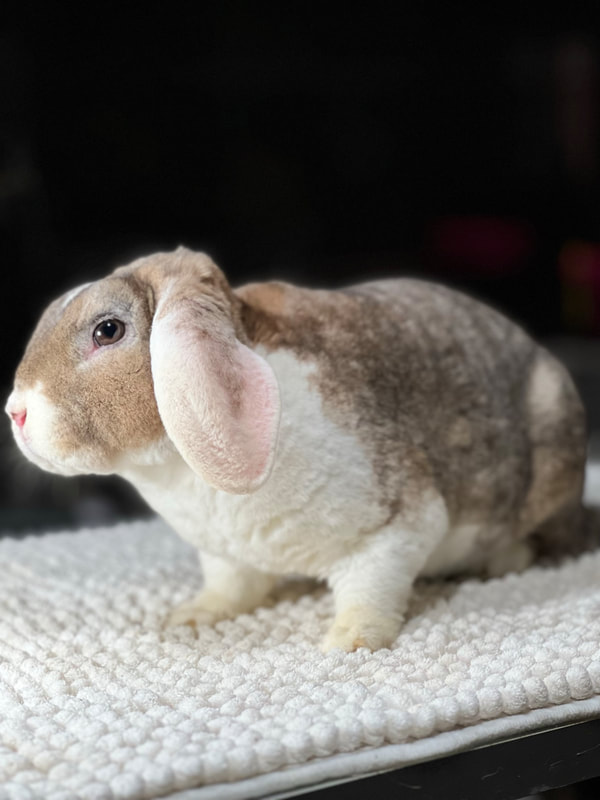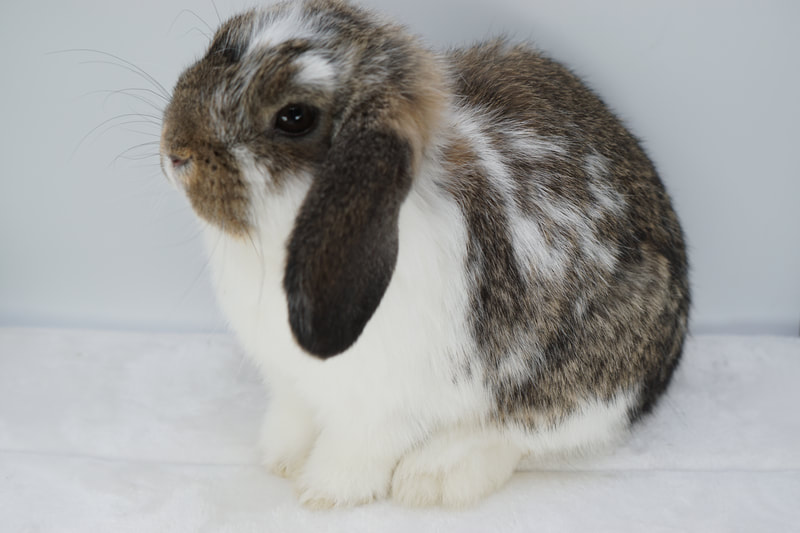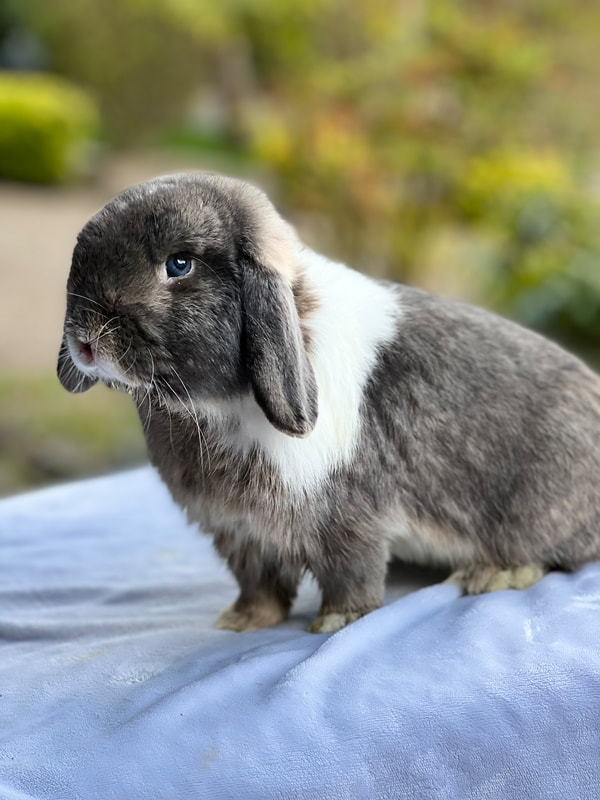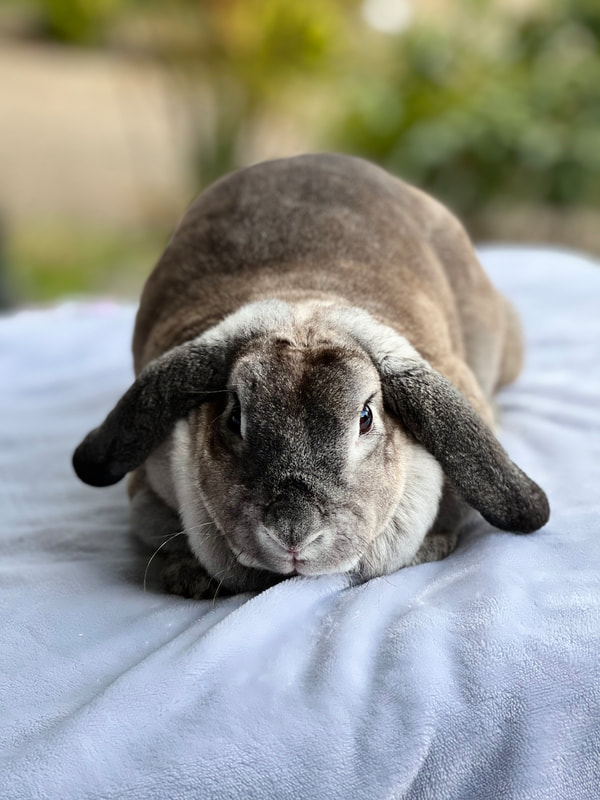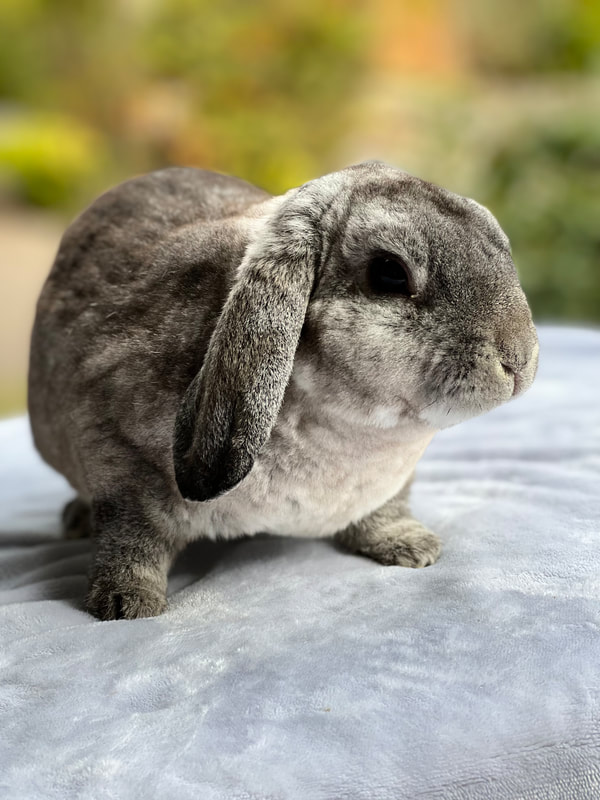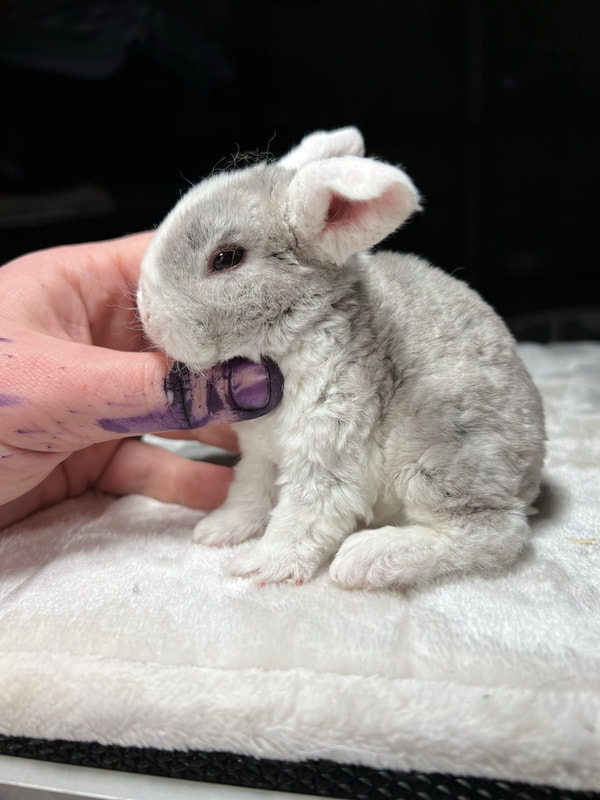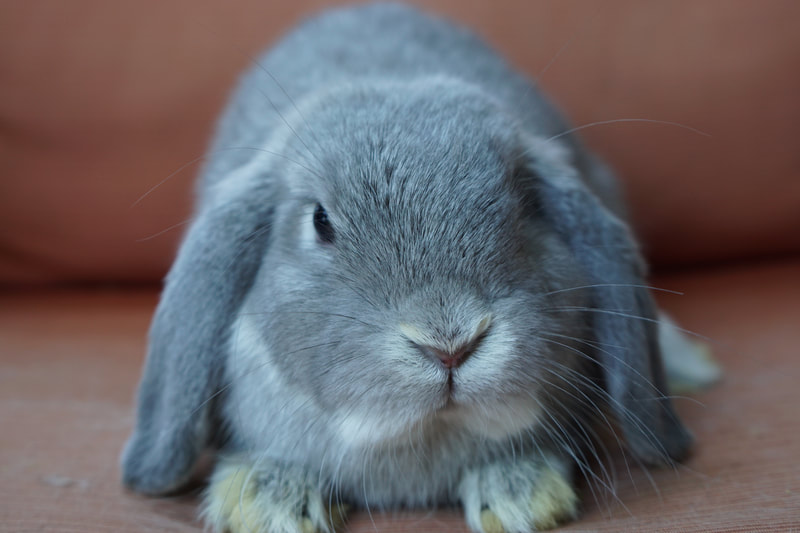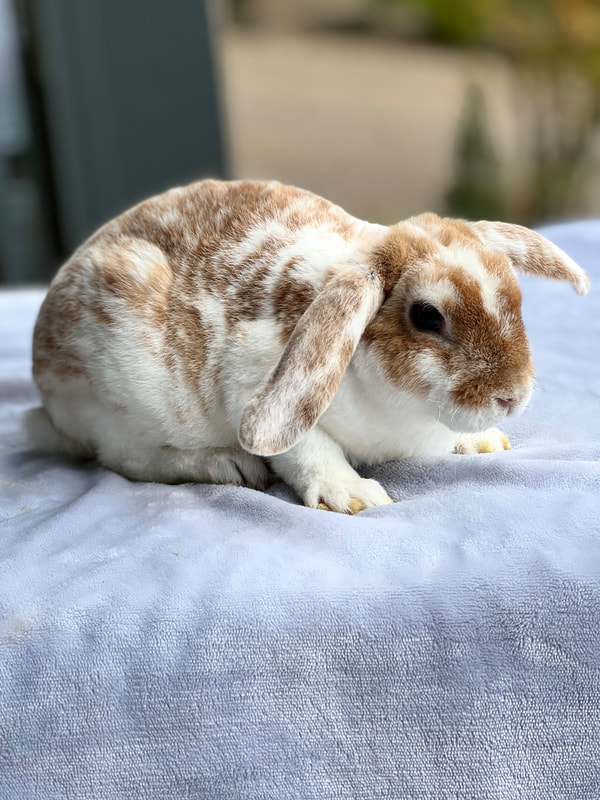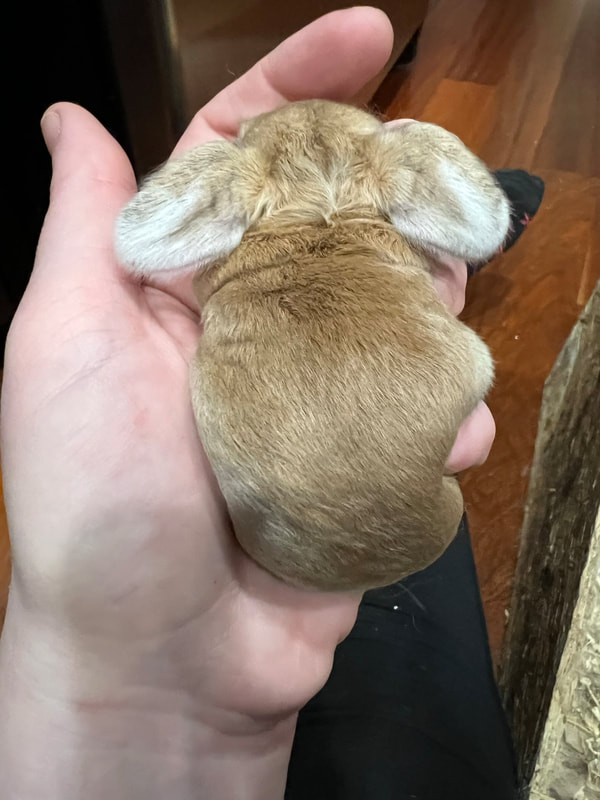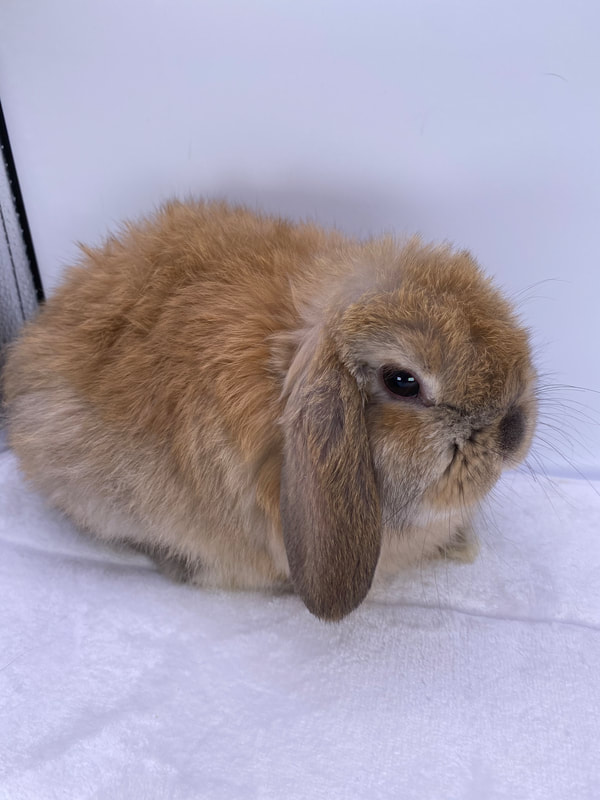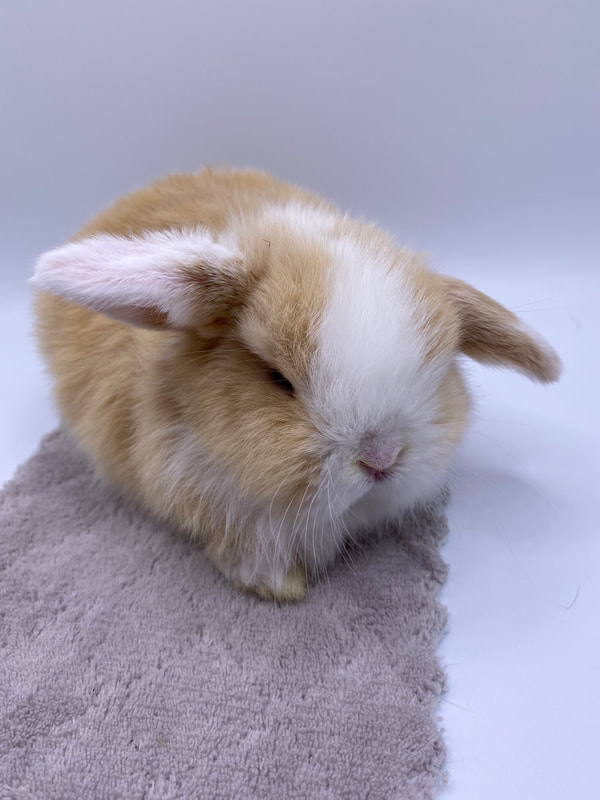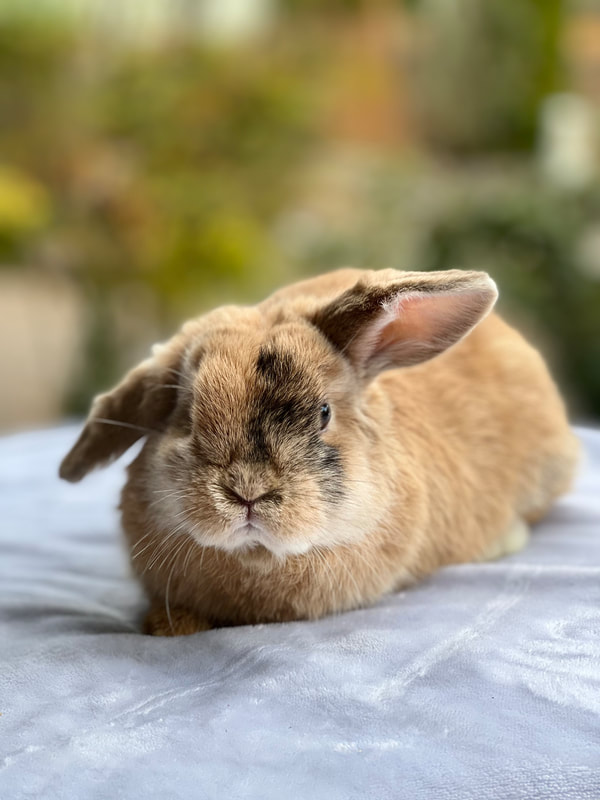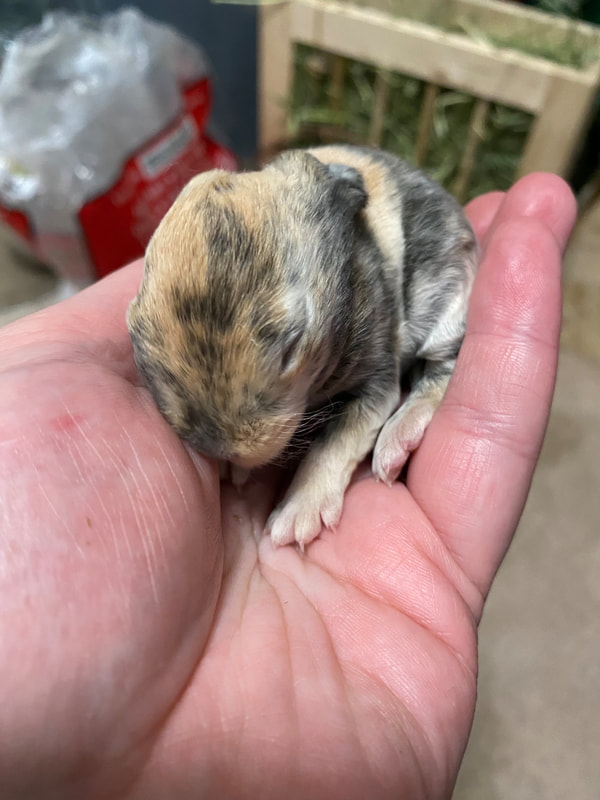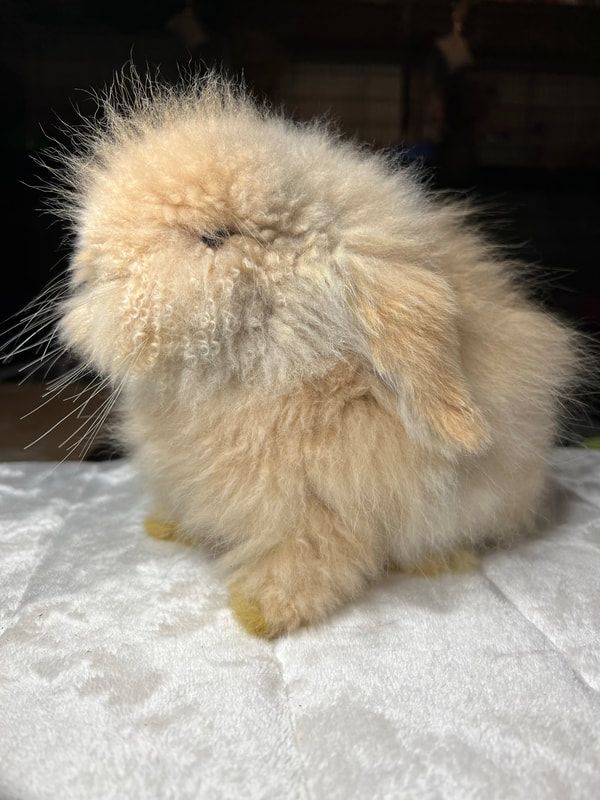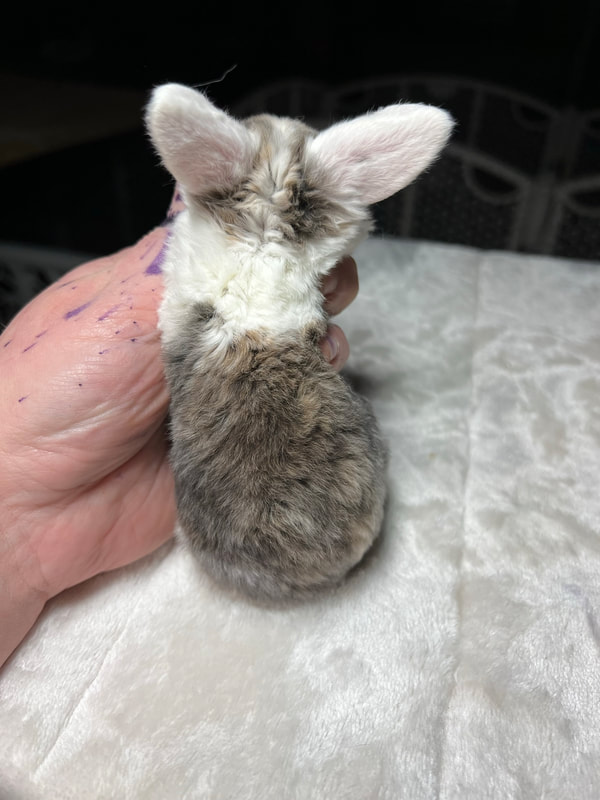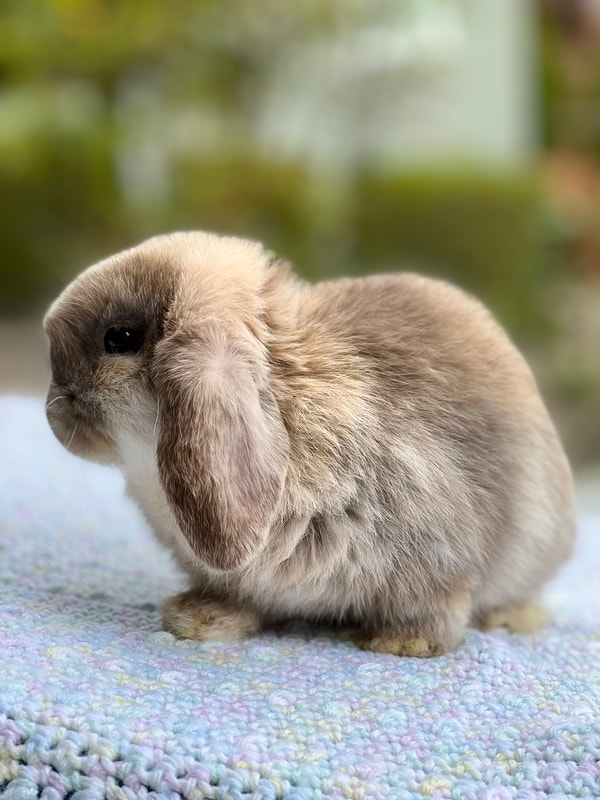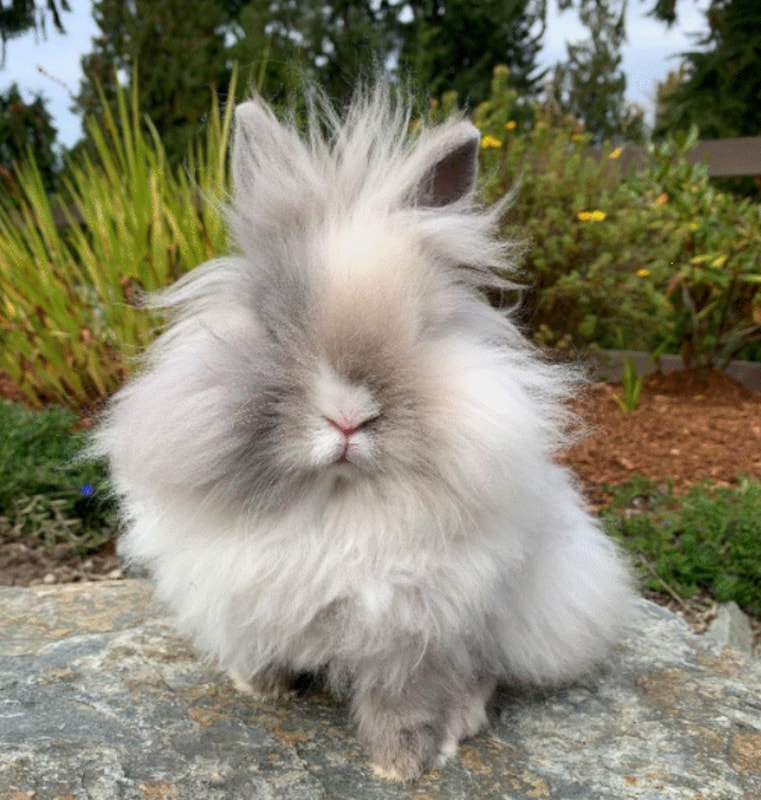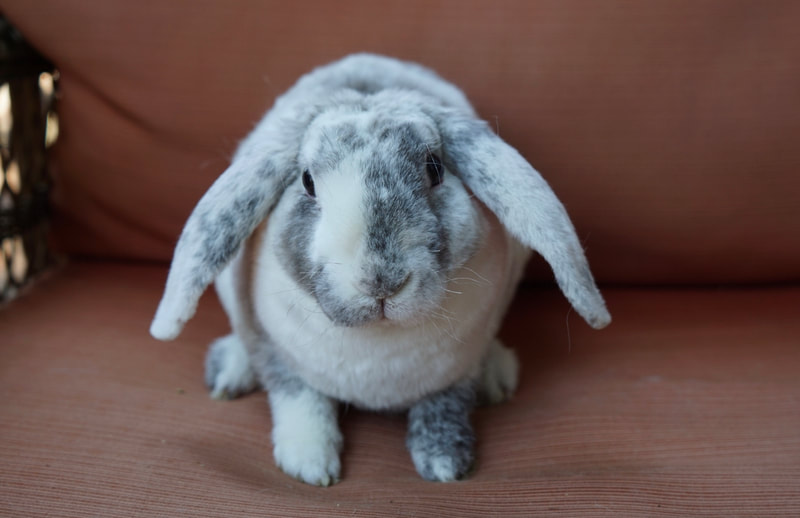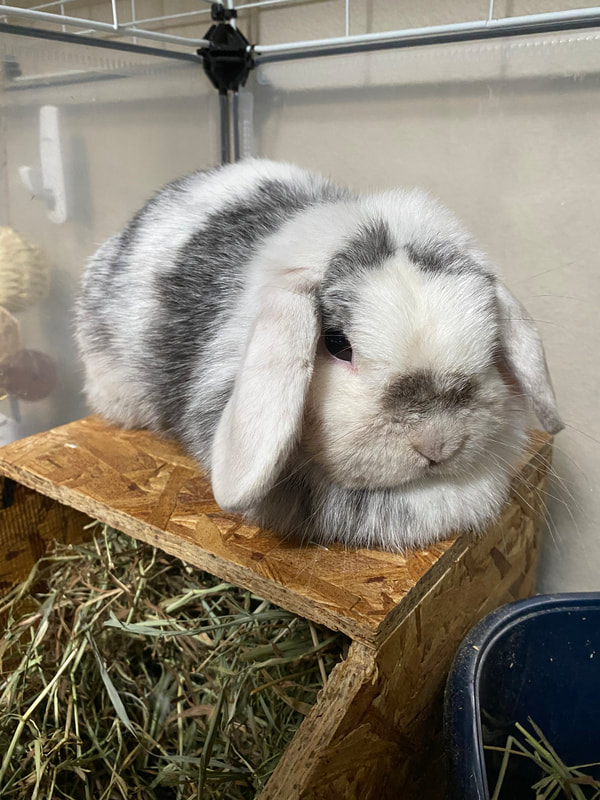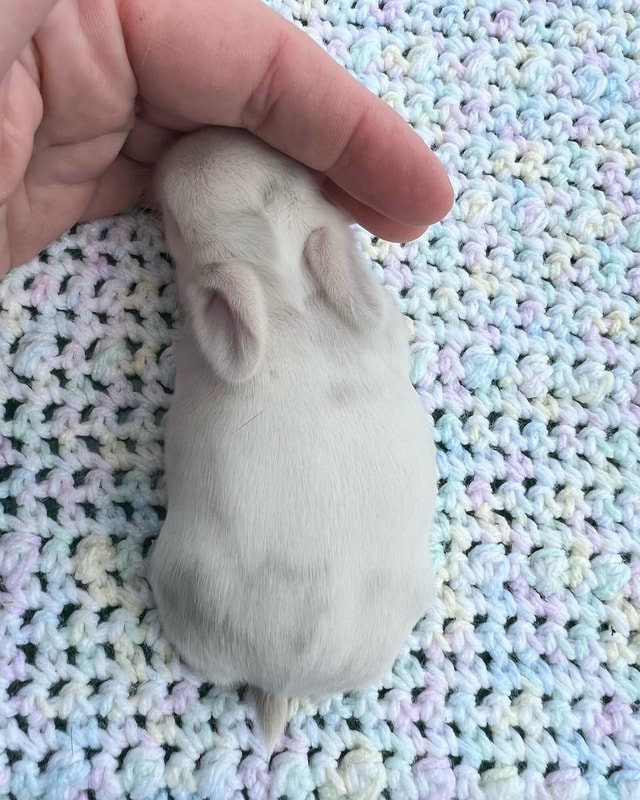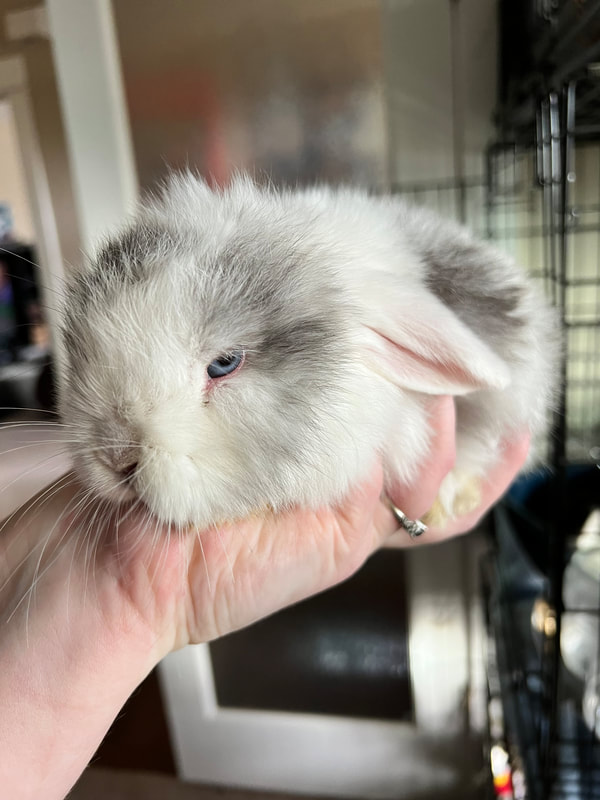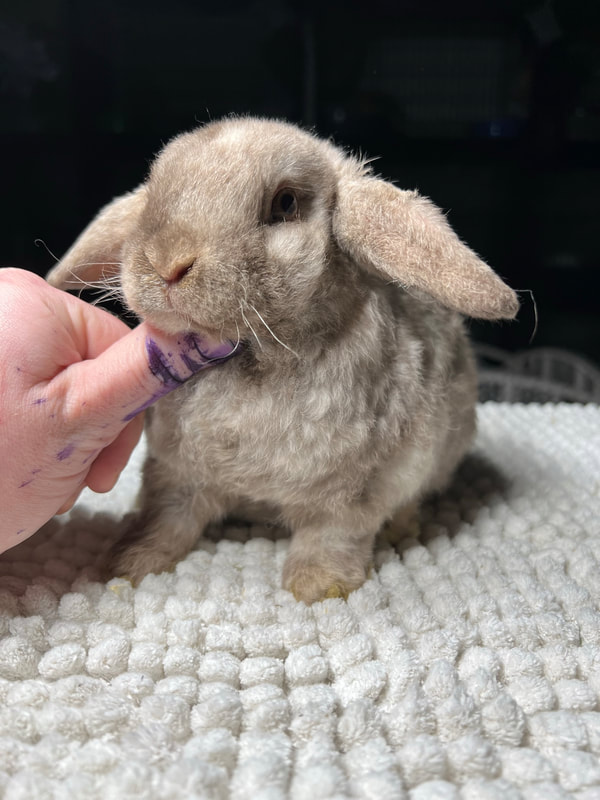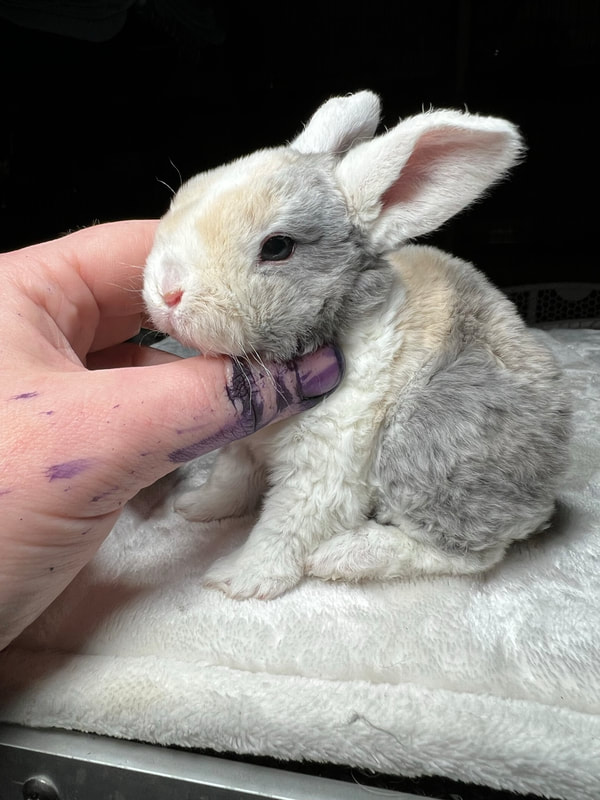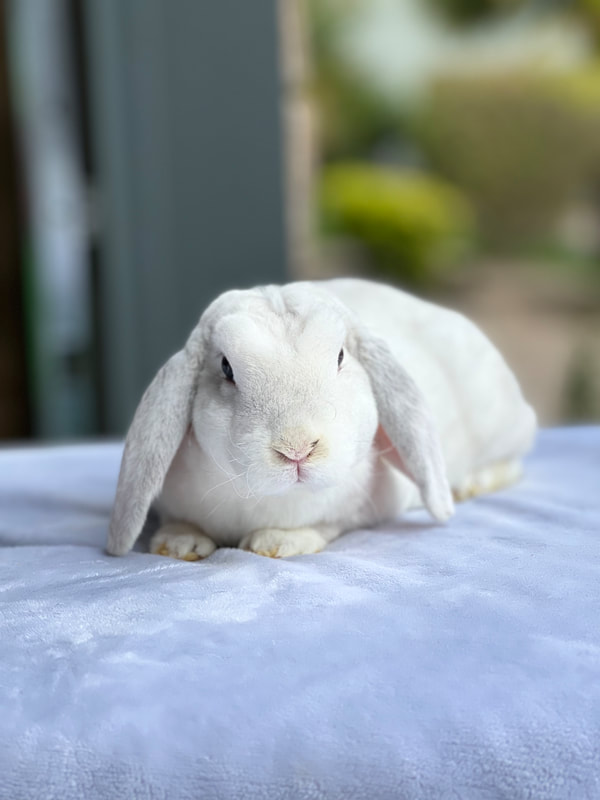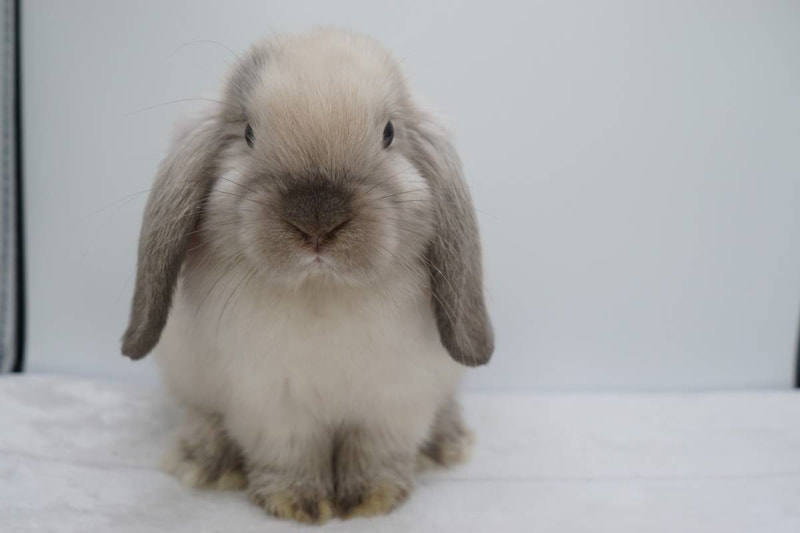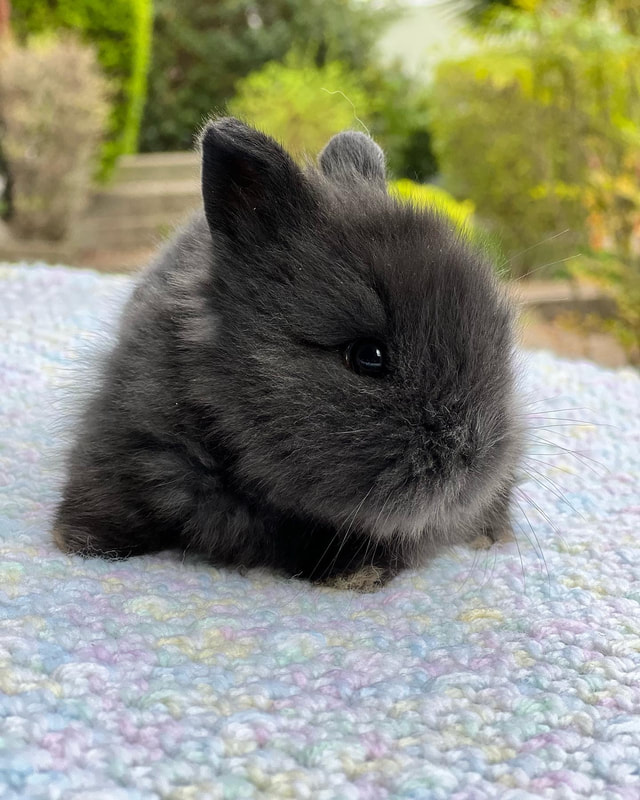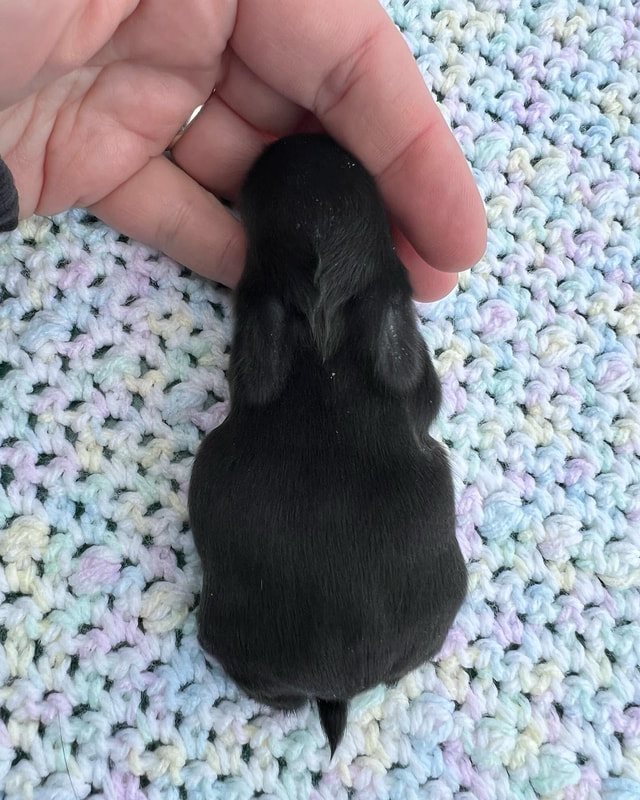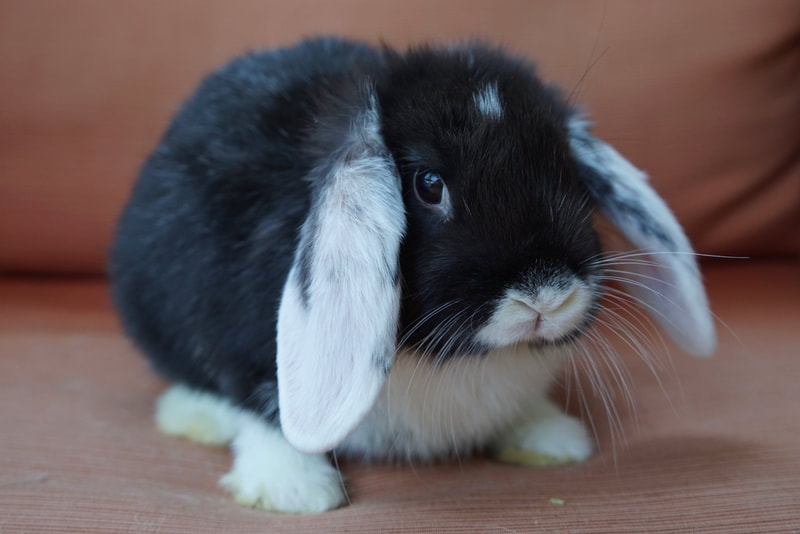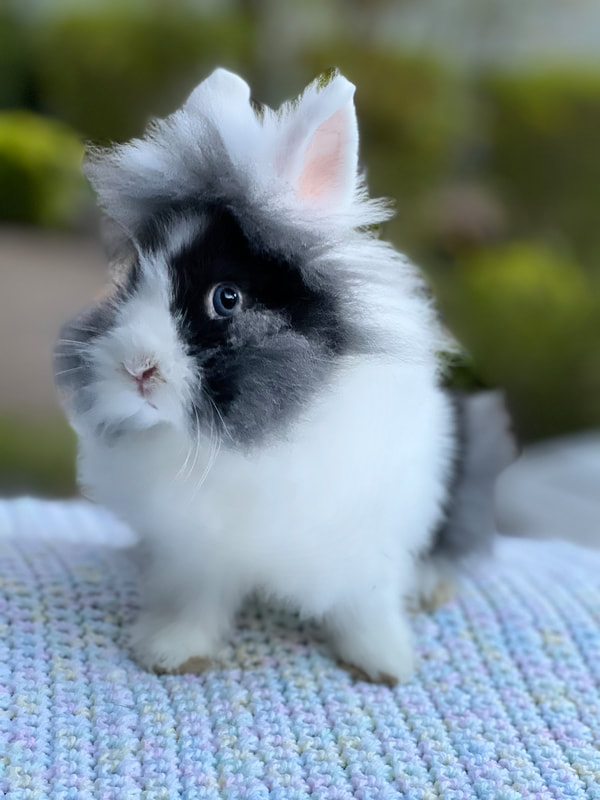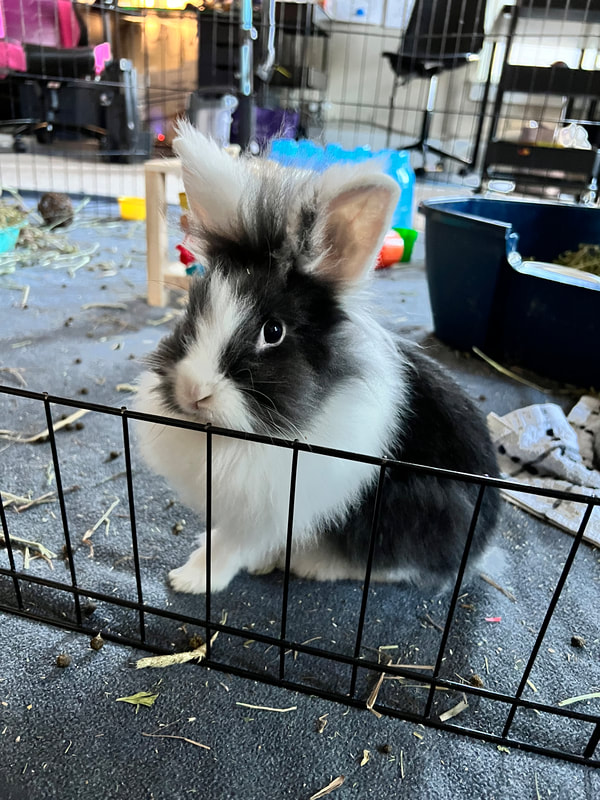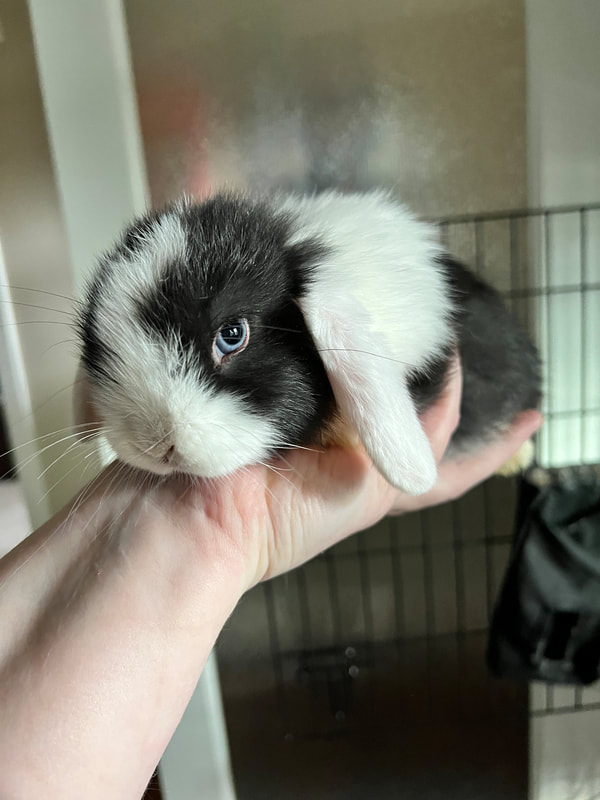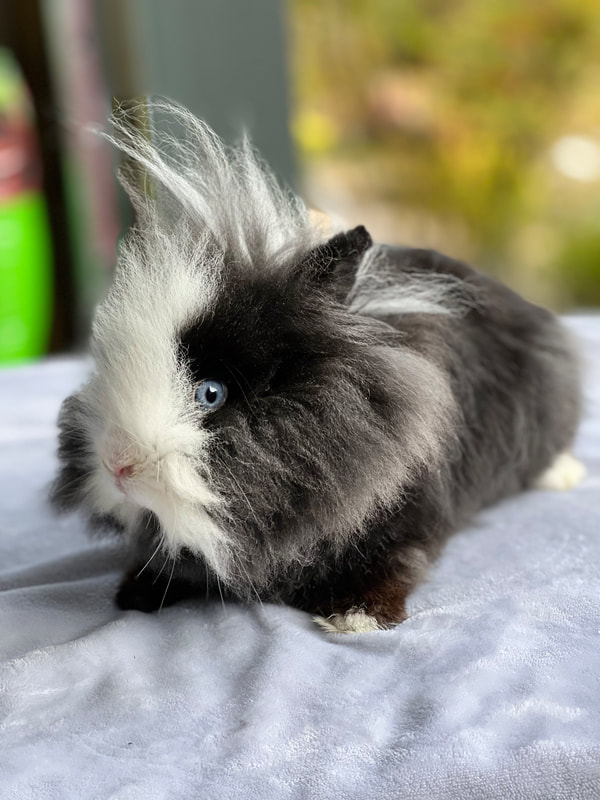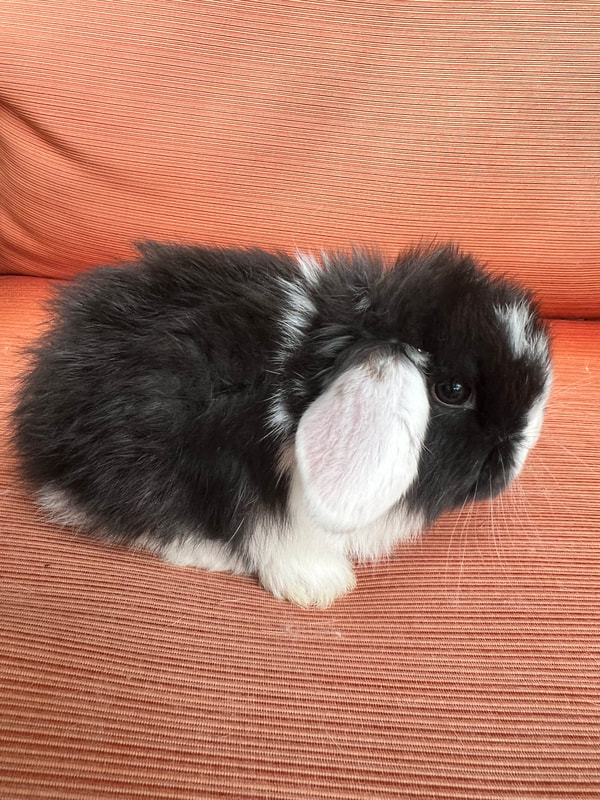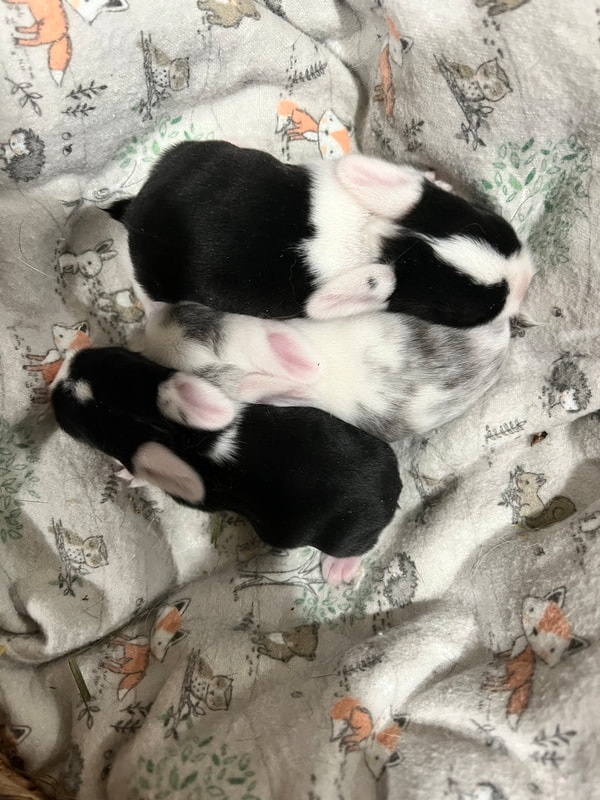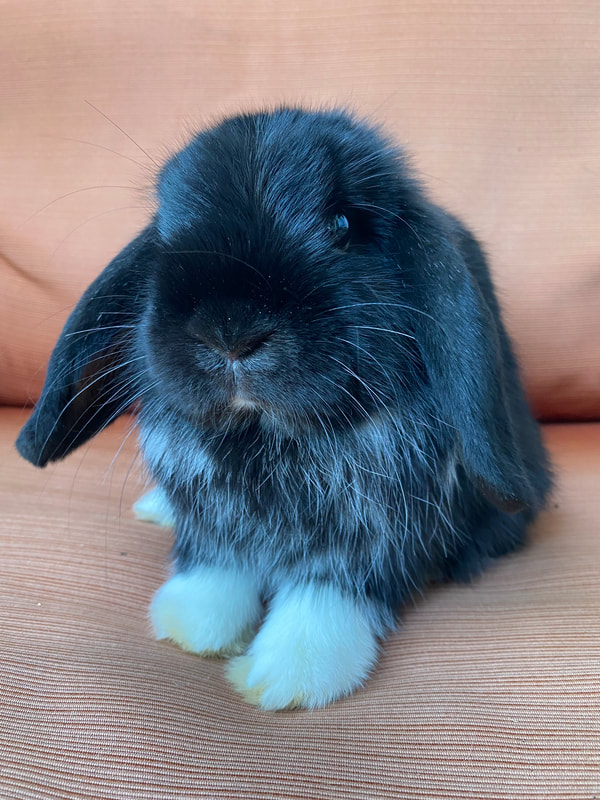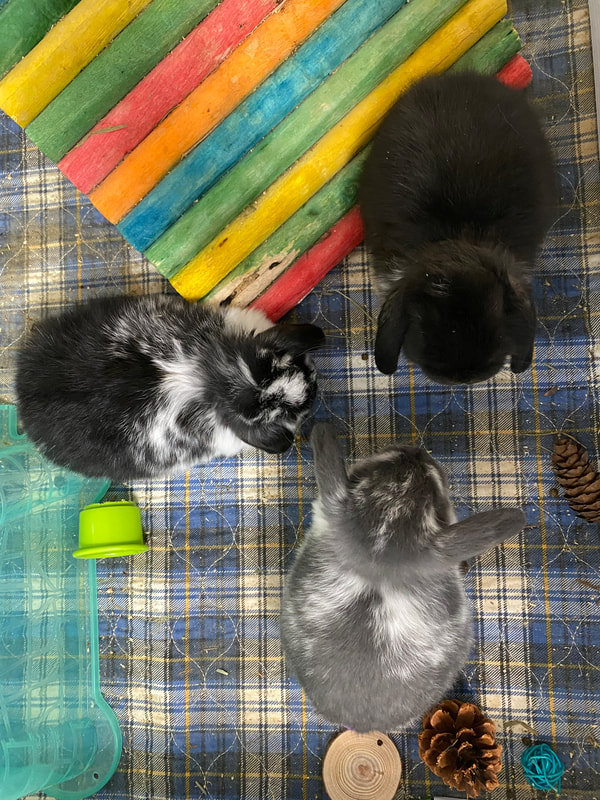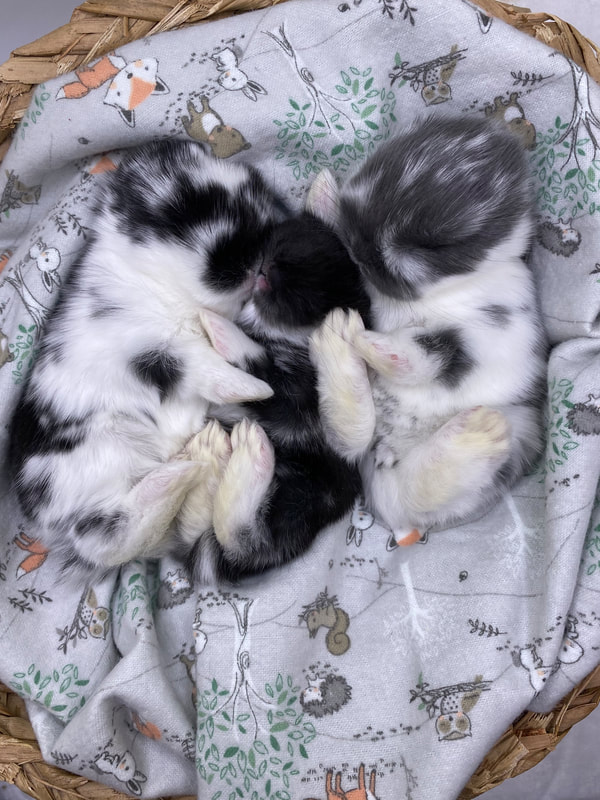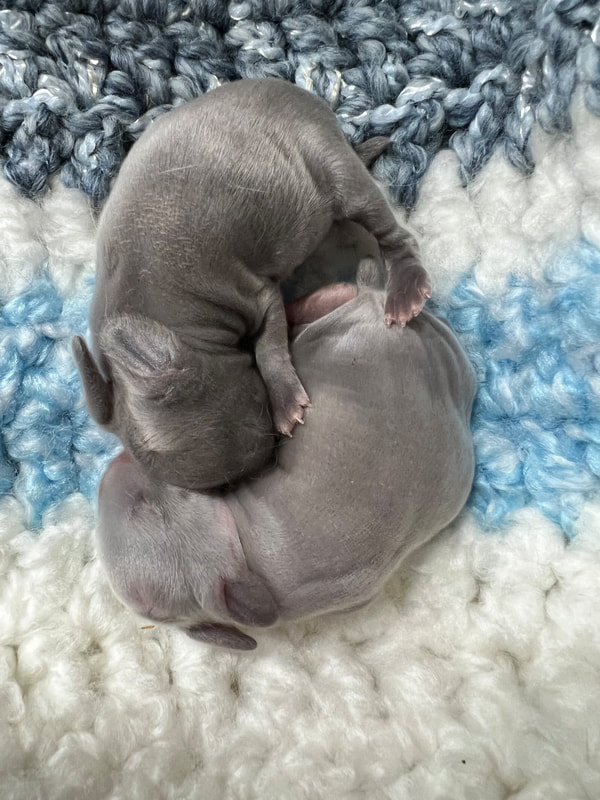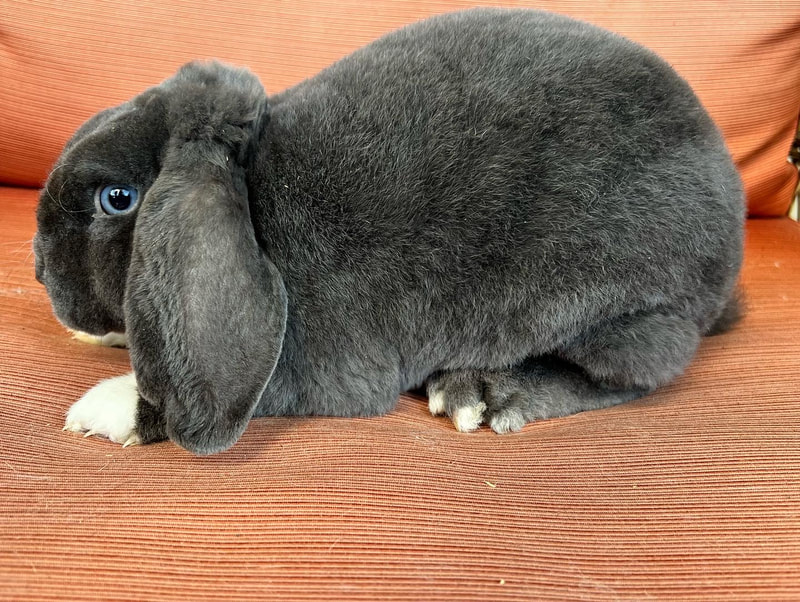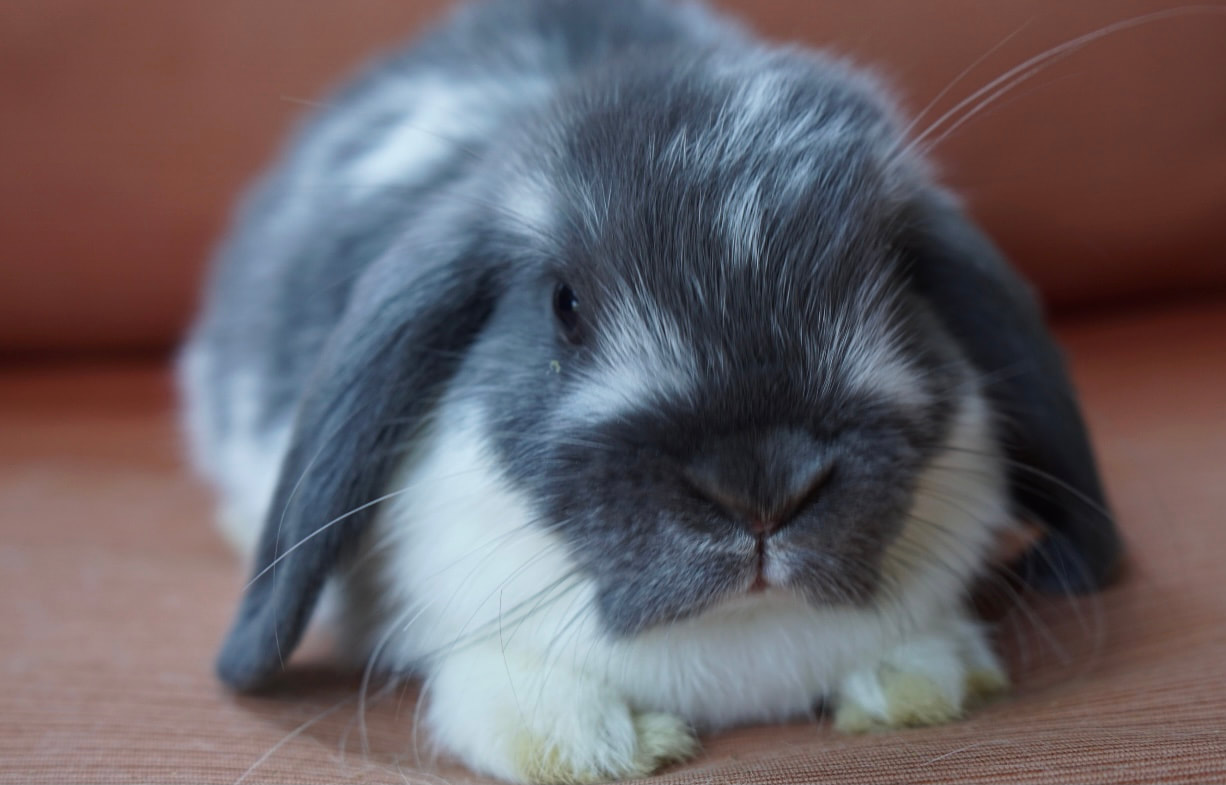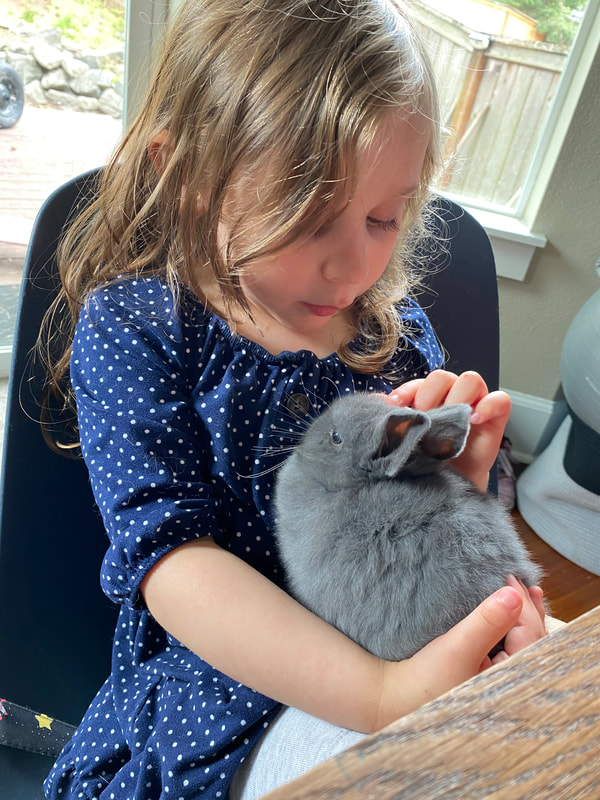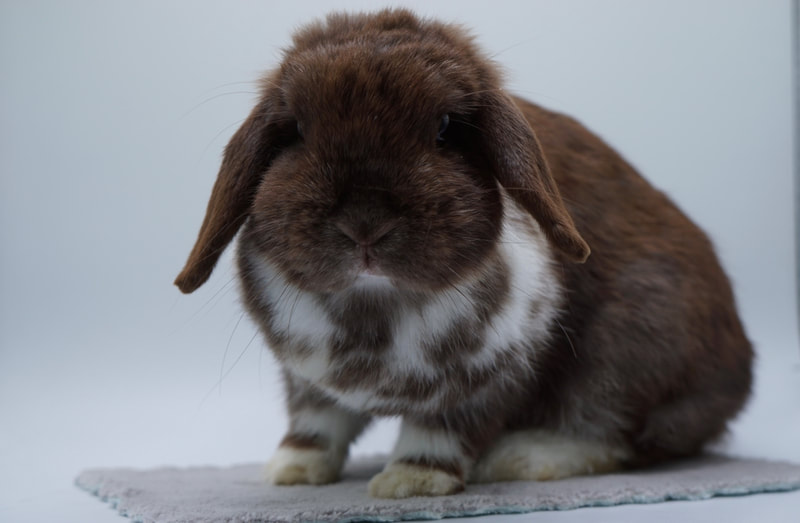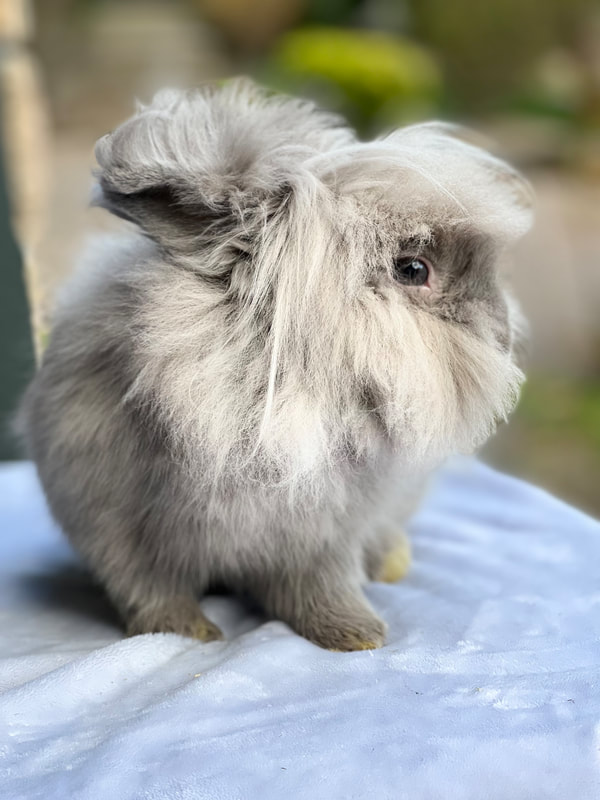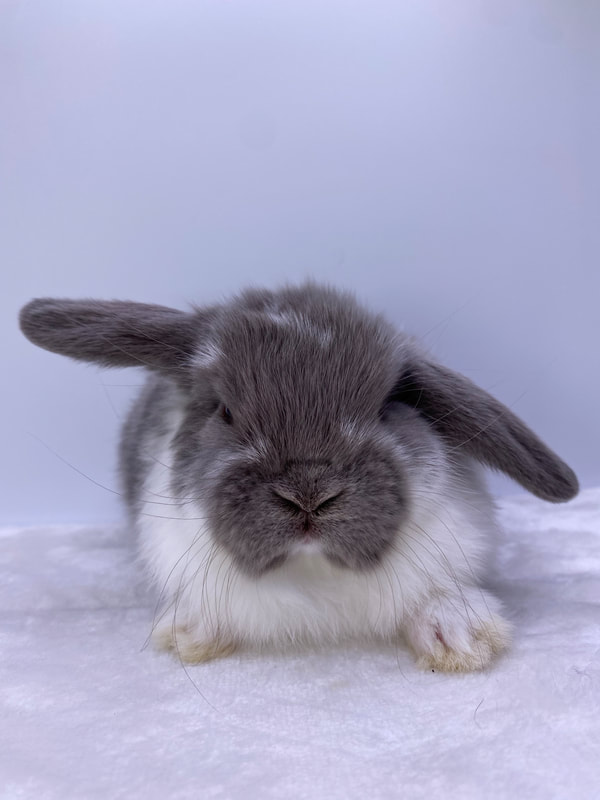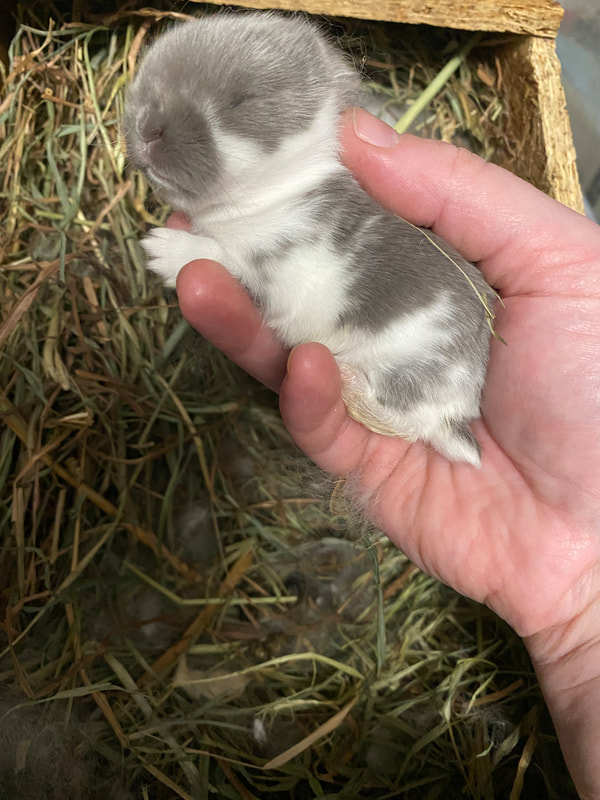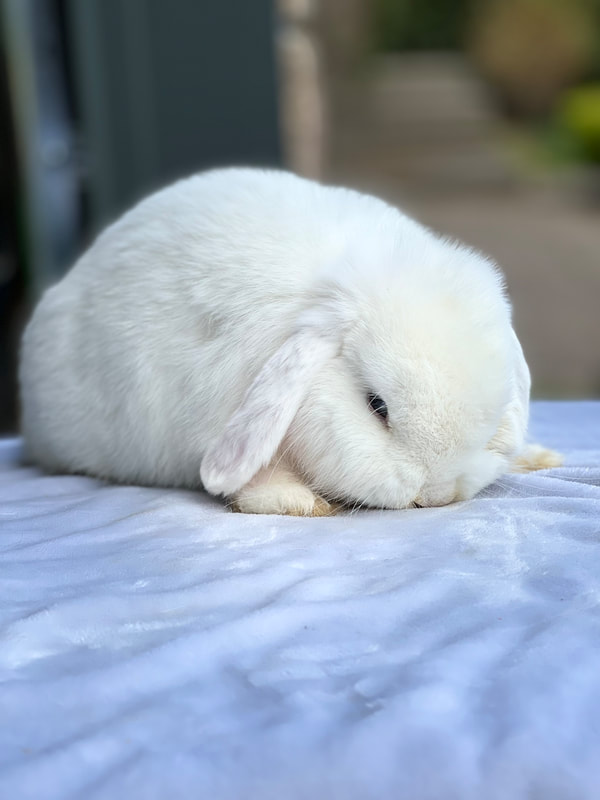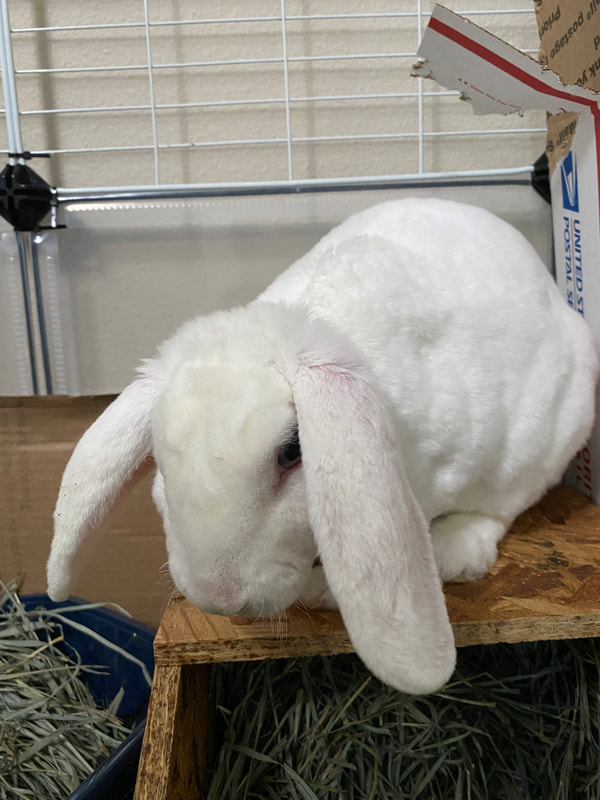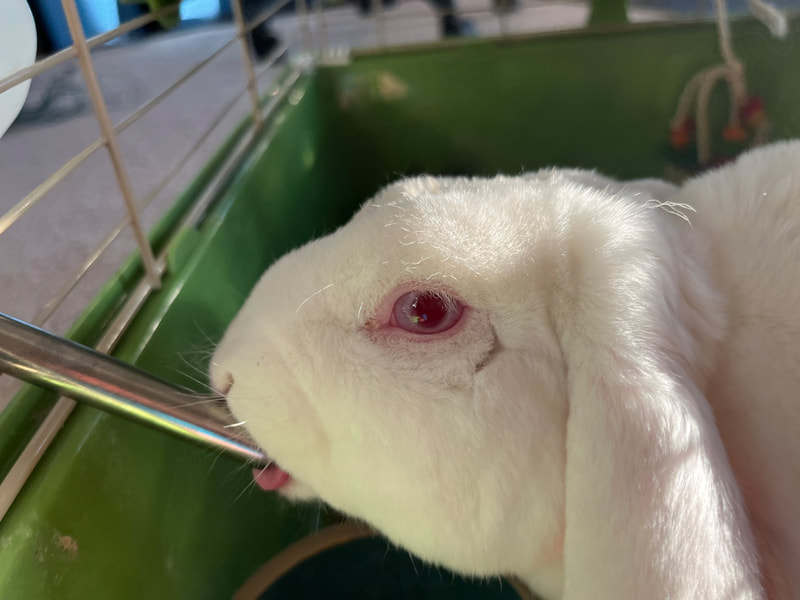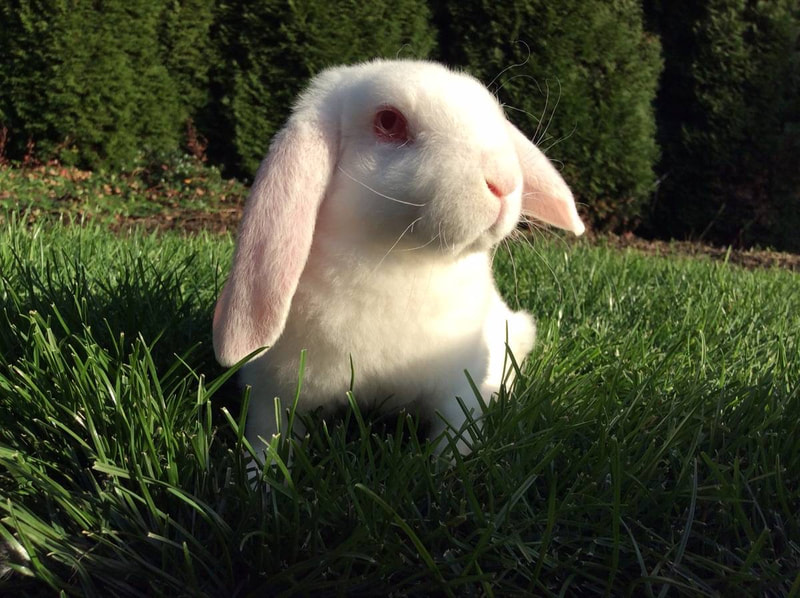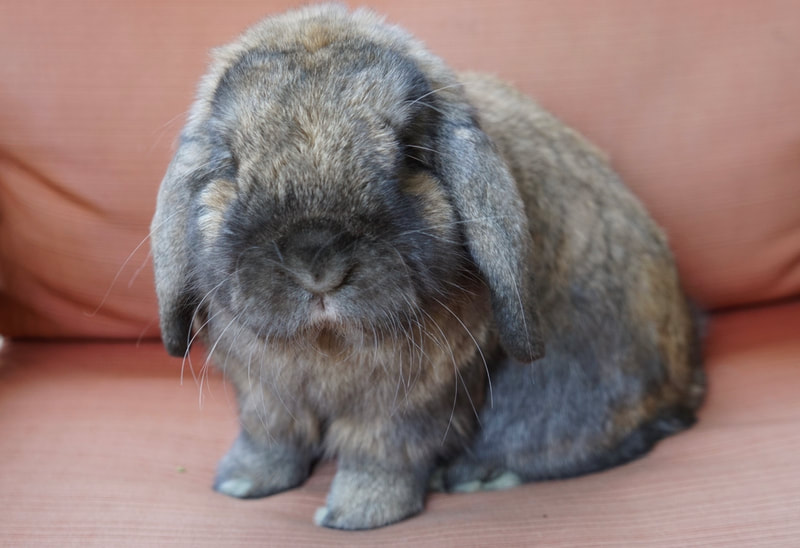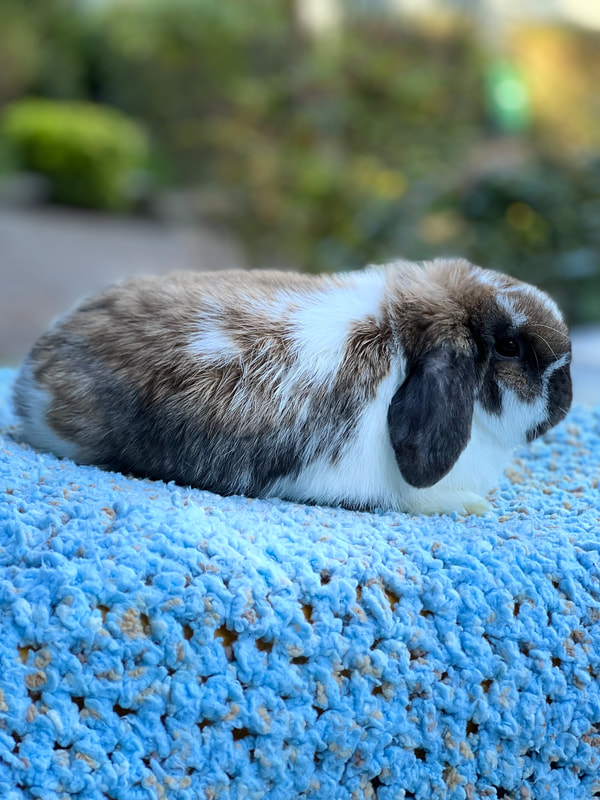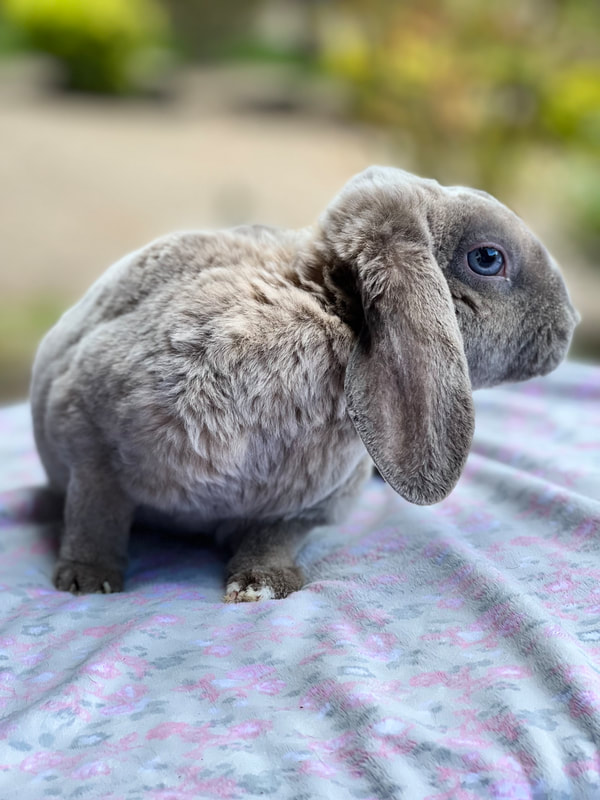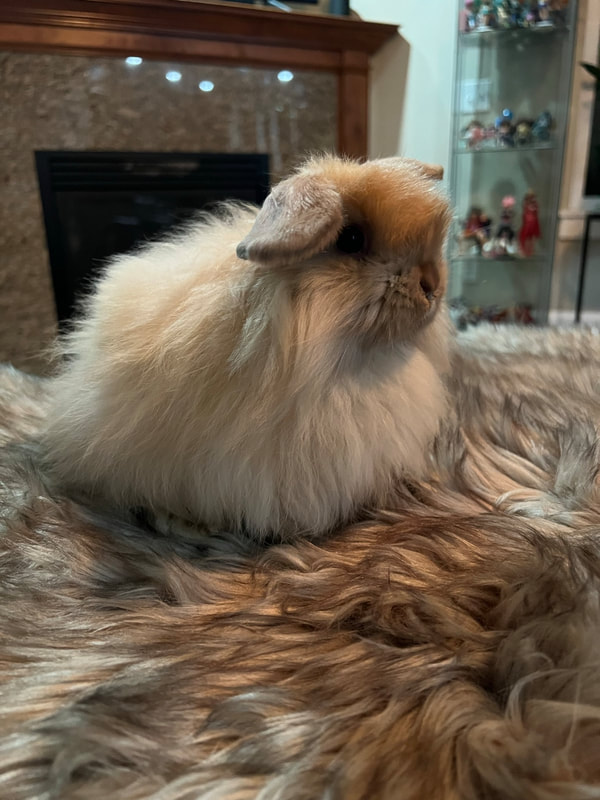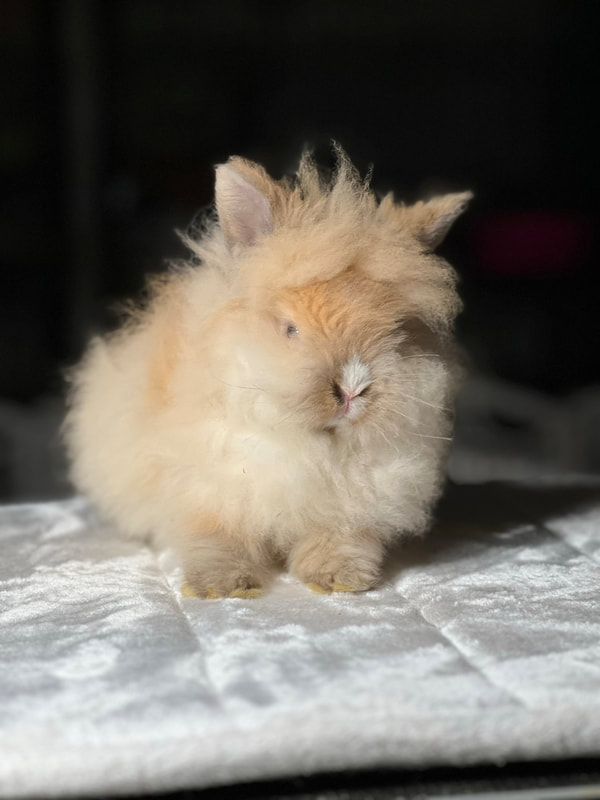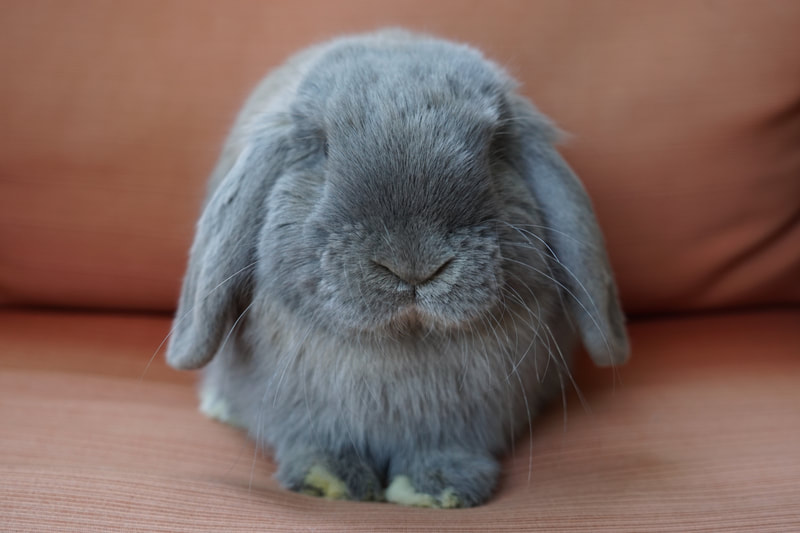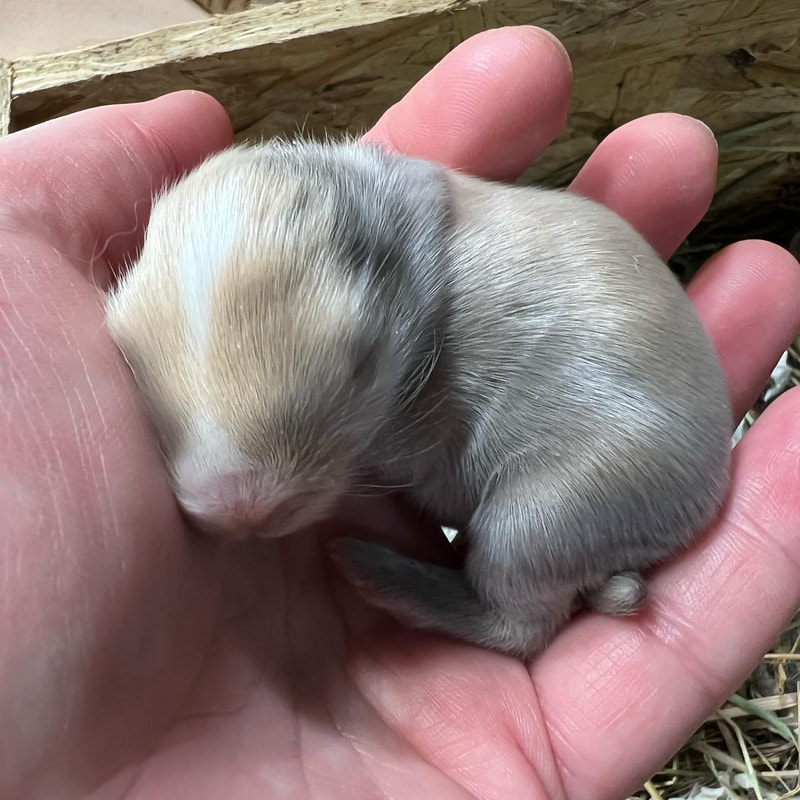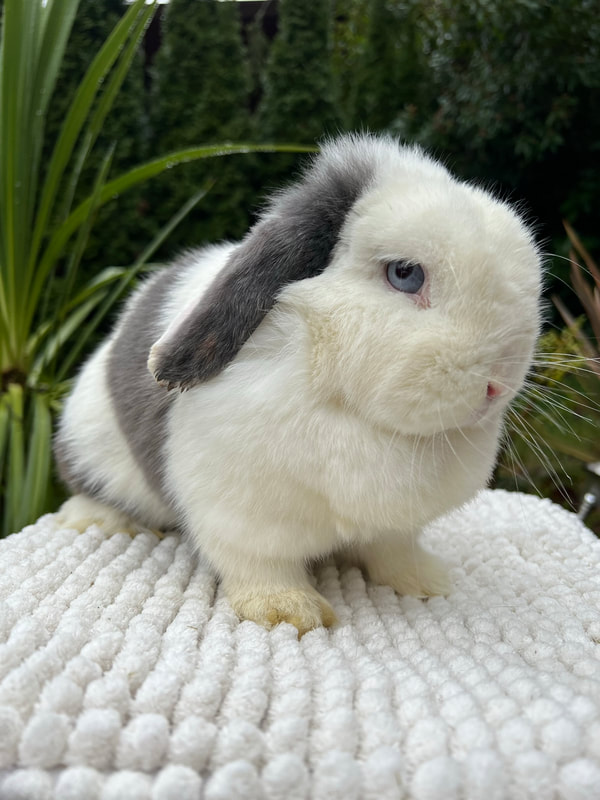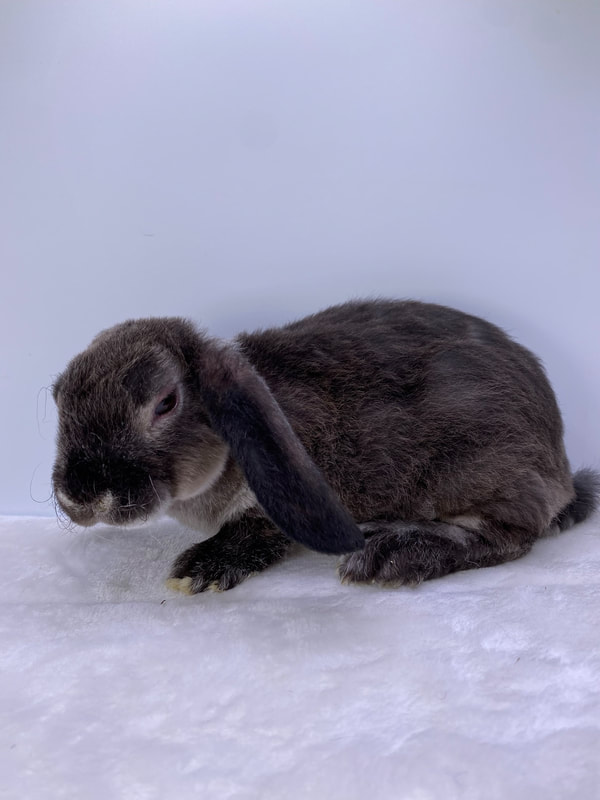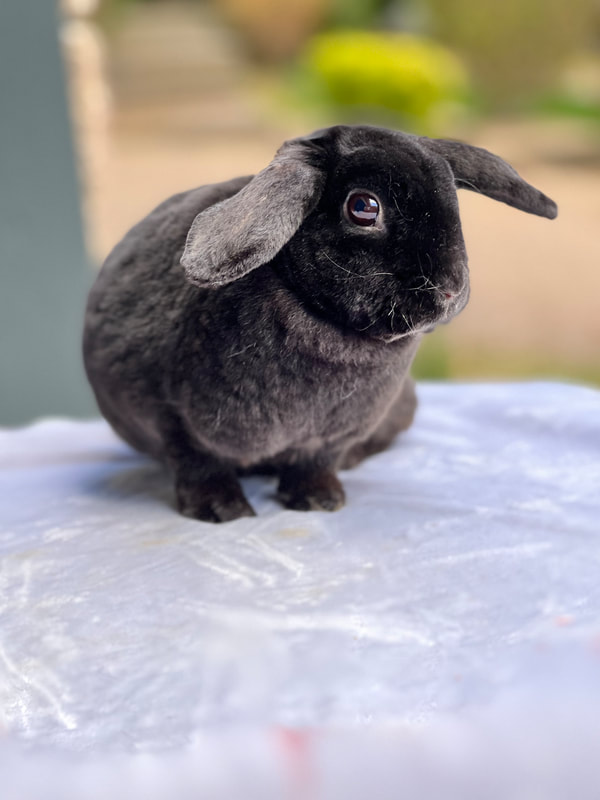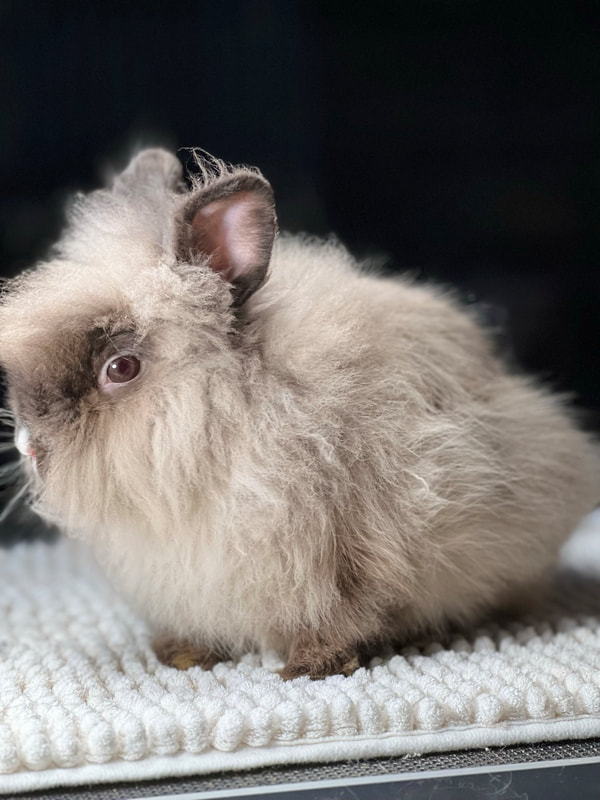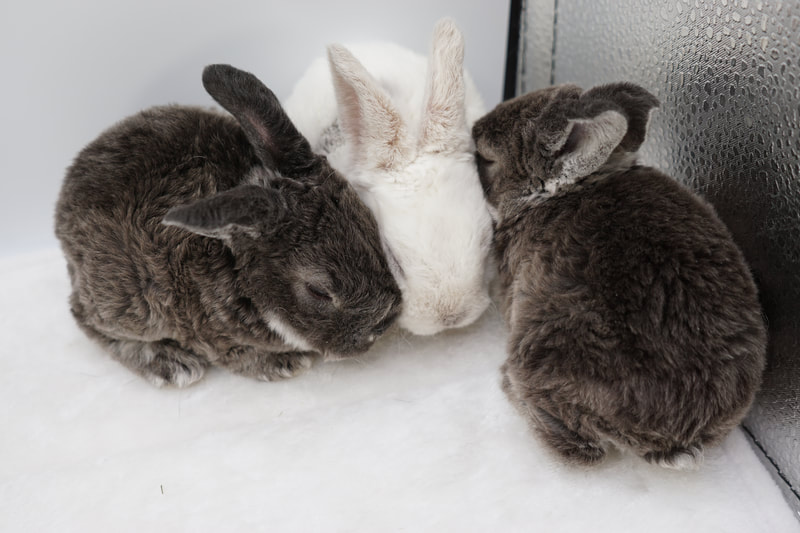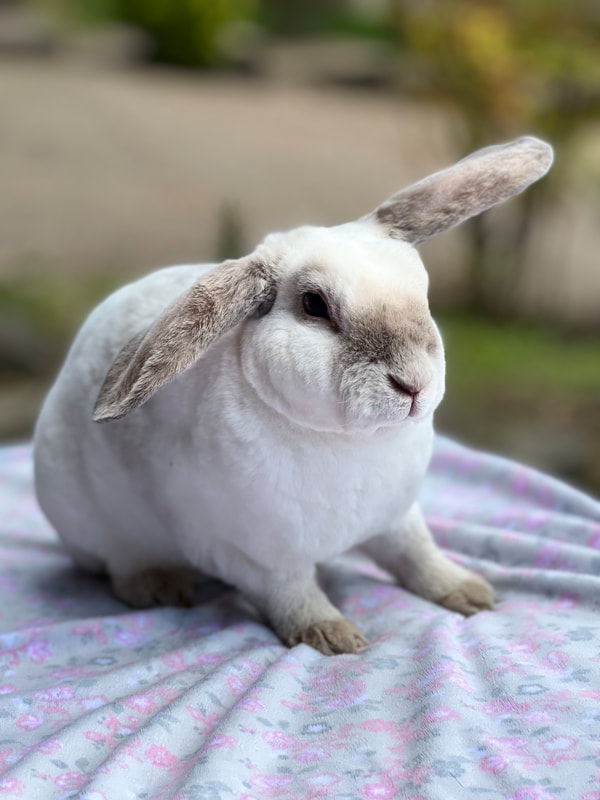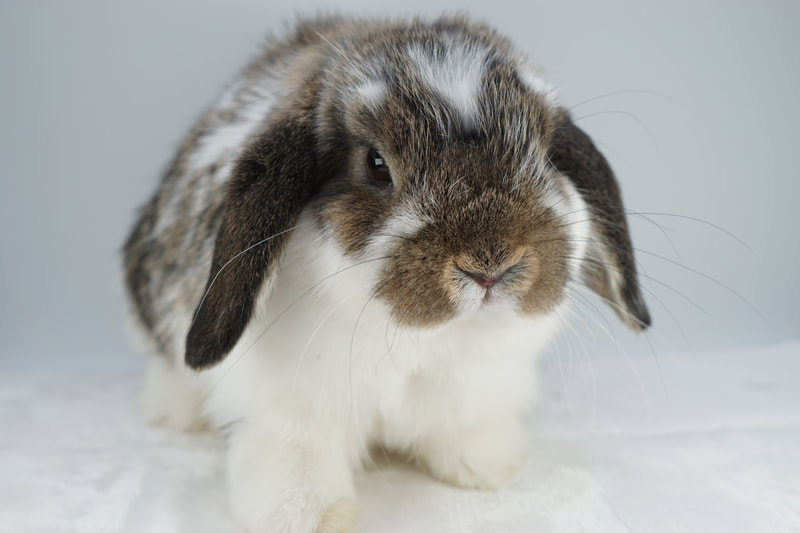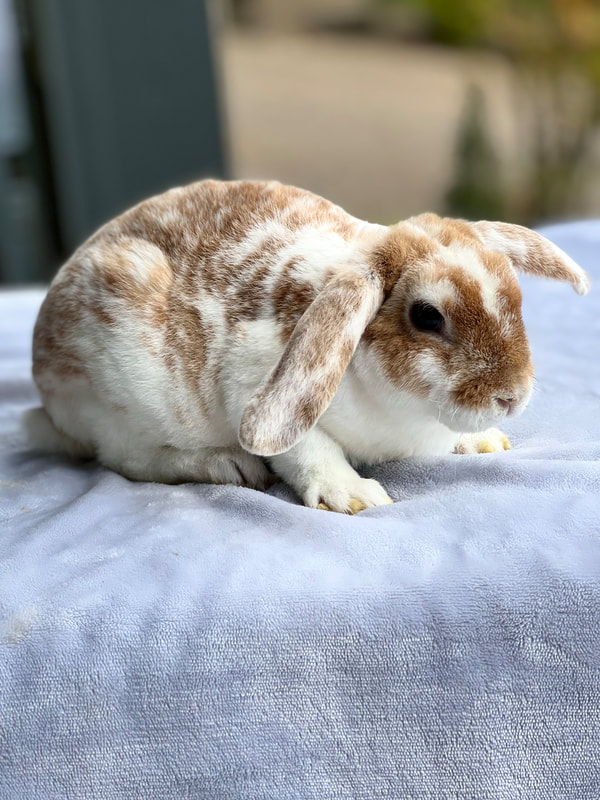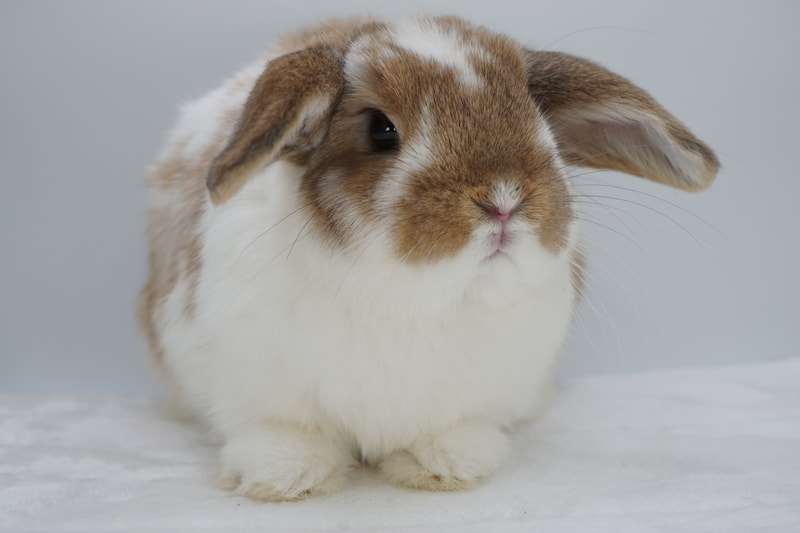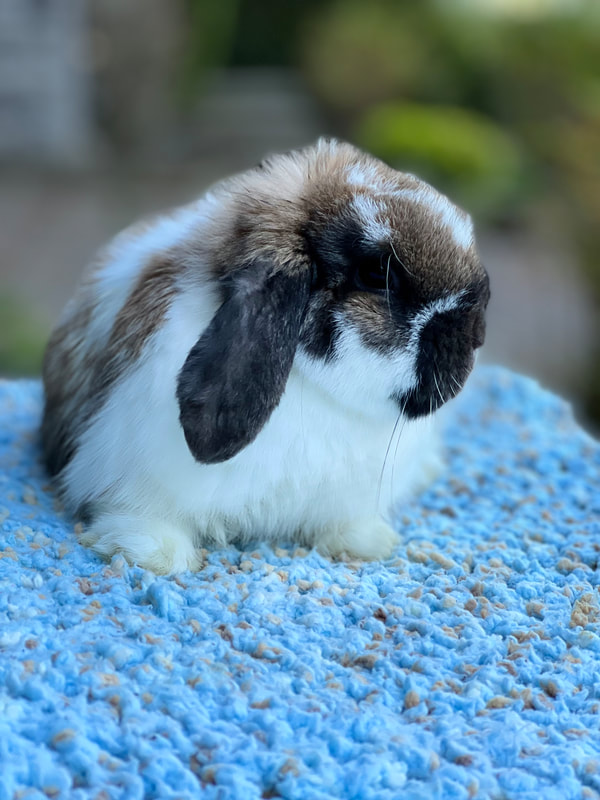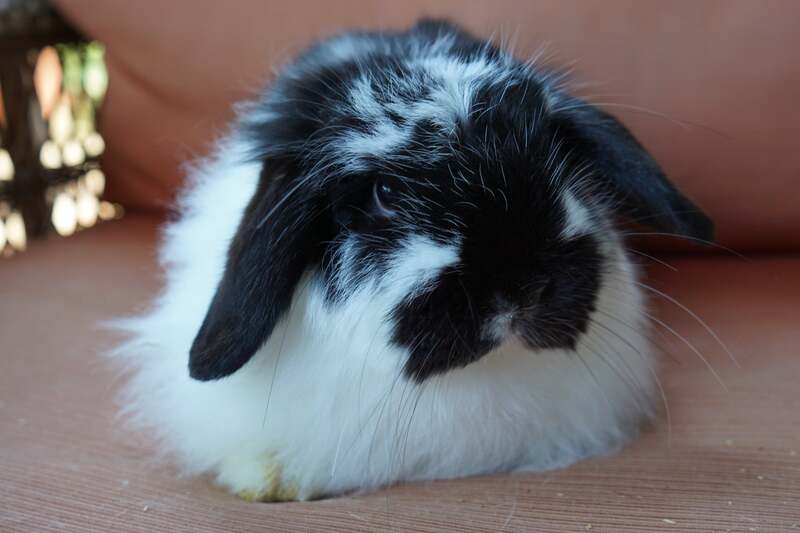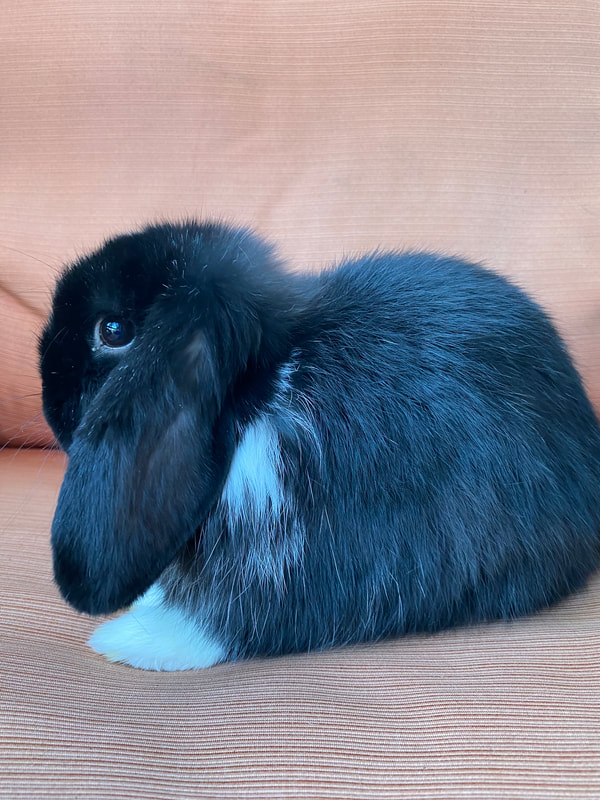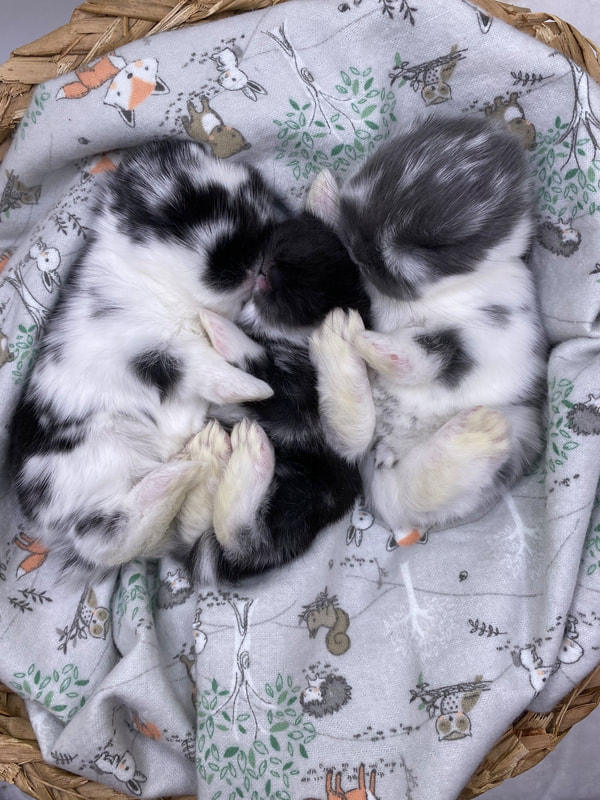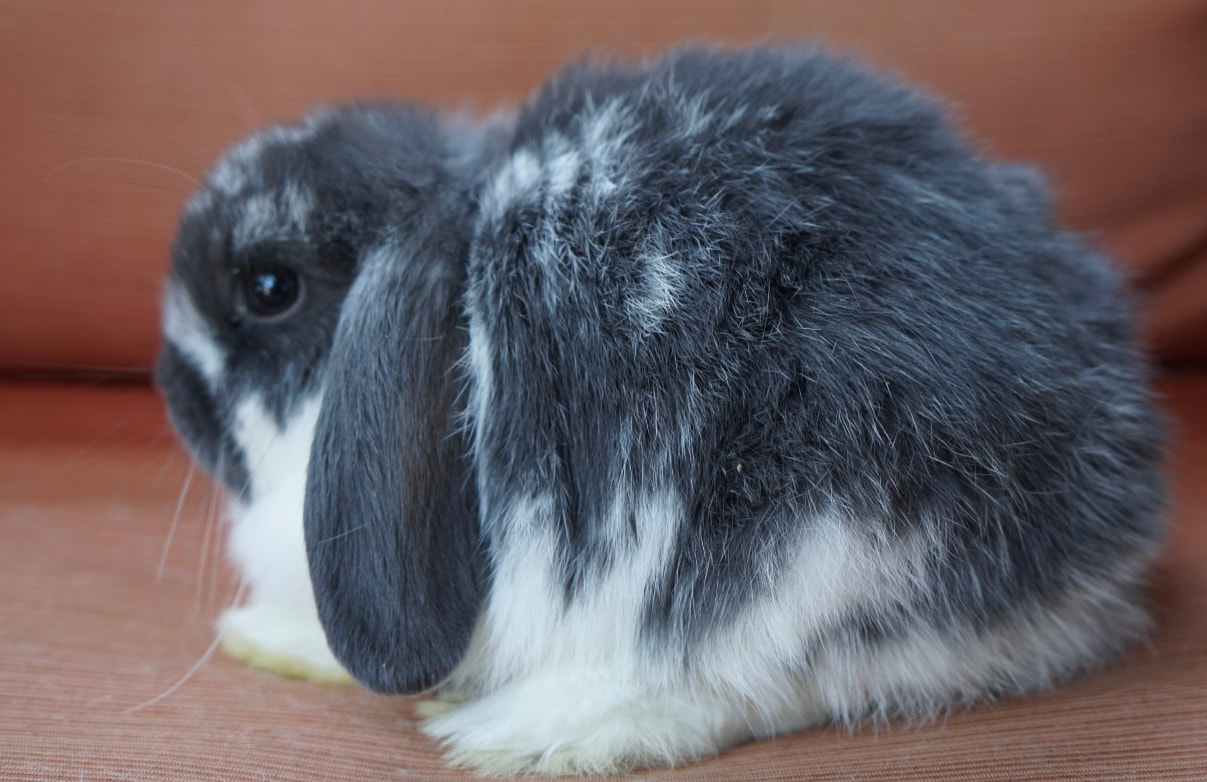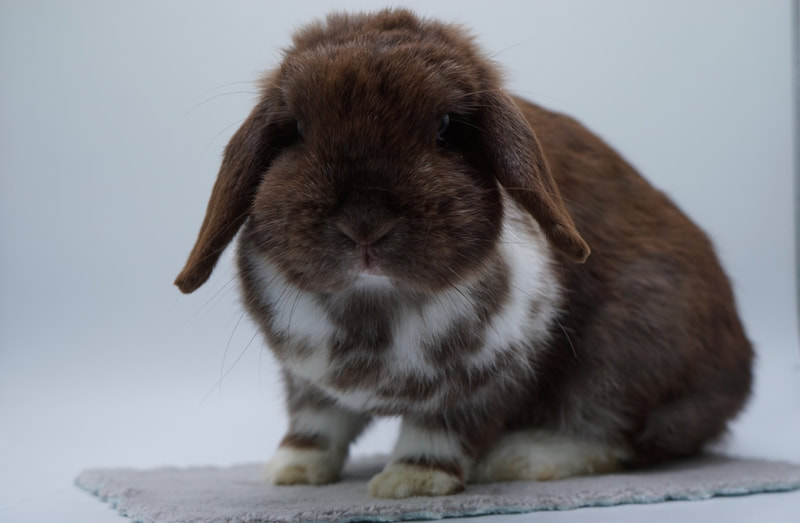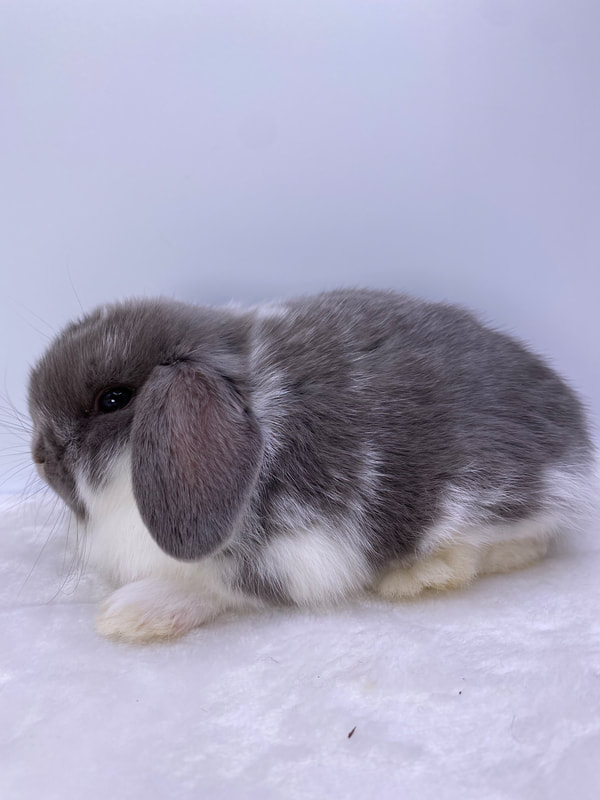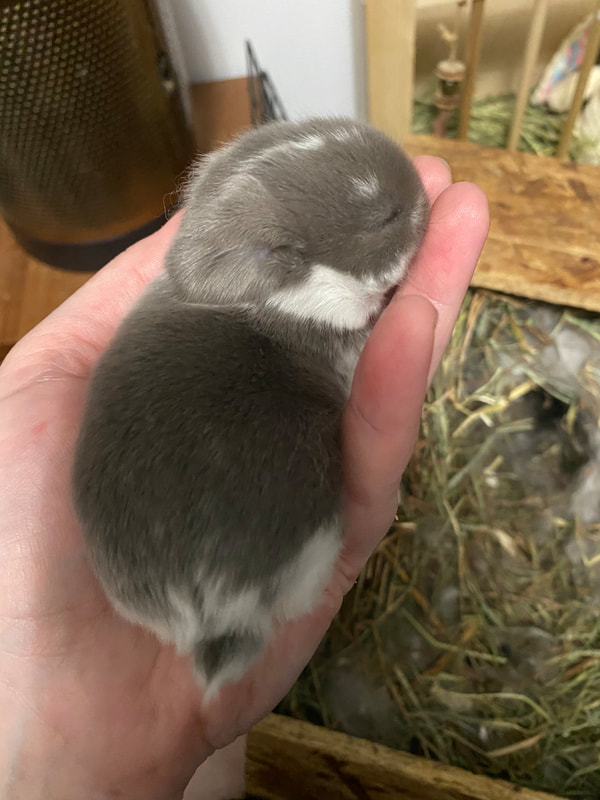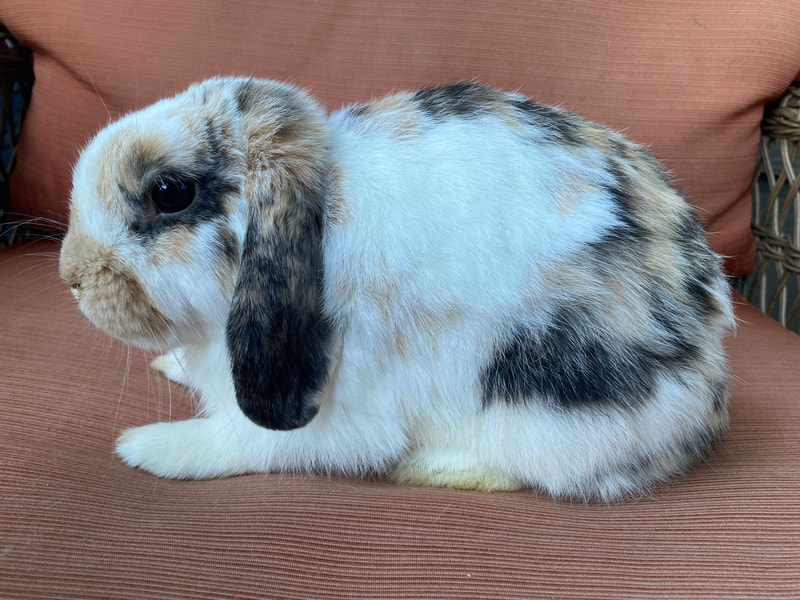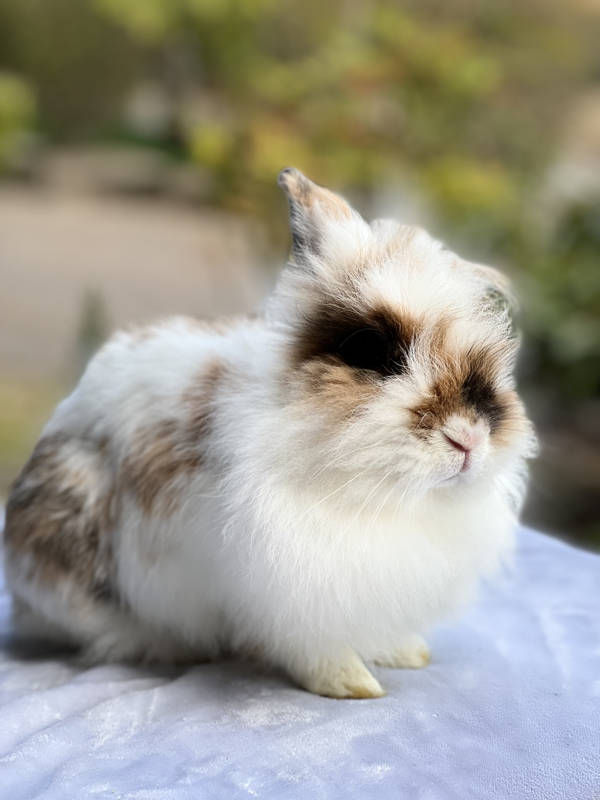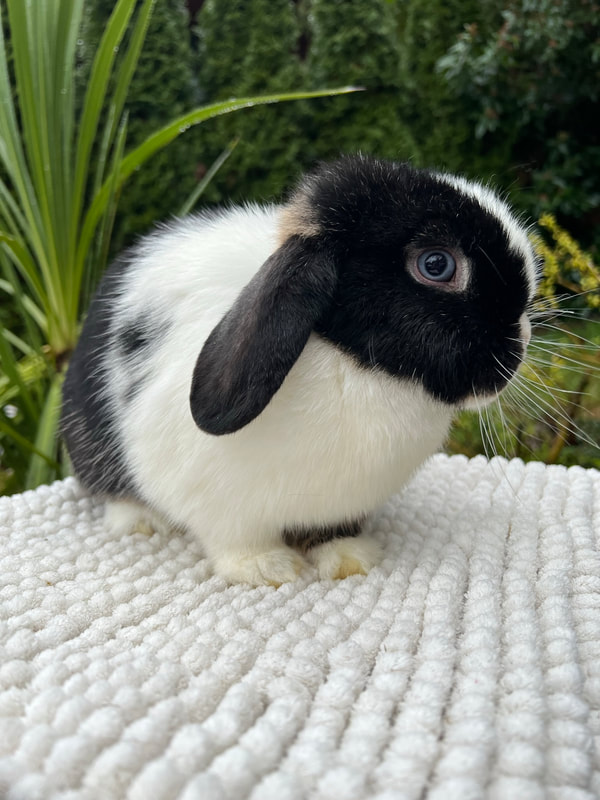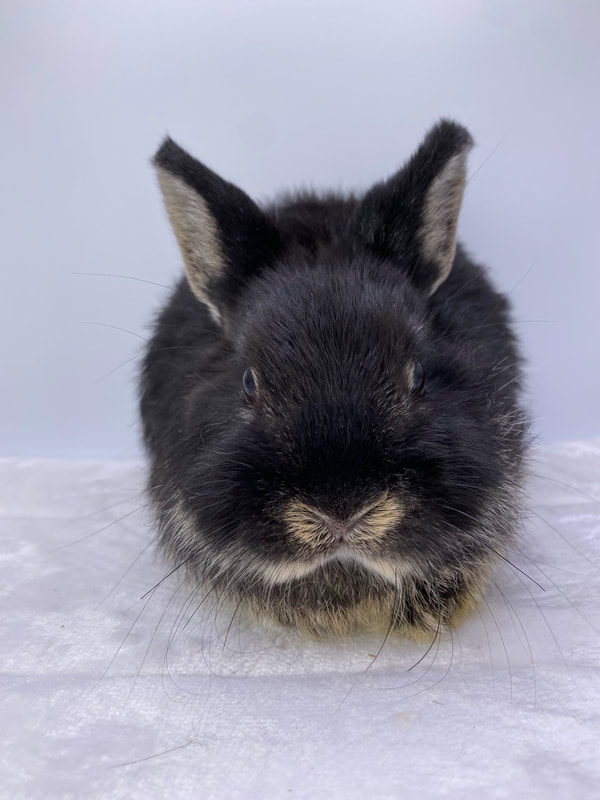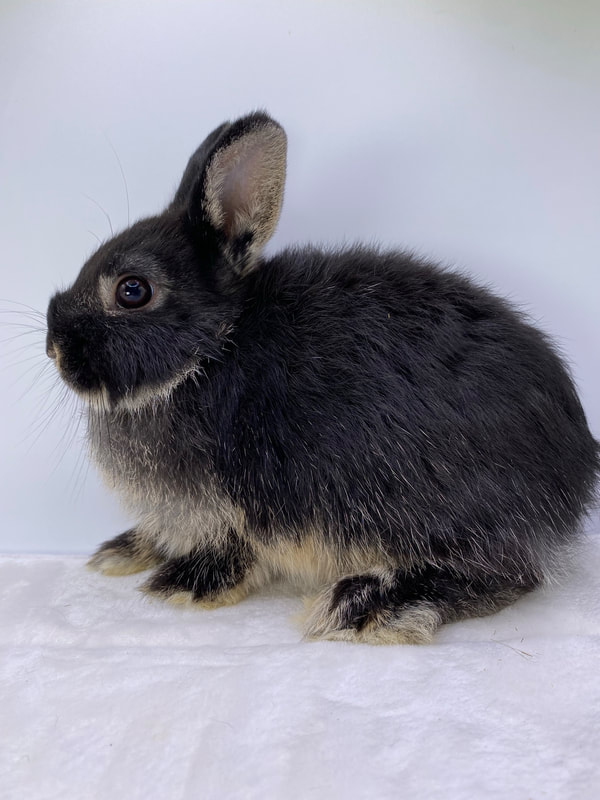Bunny Color Guide
Bunnies come in many colors. There is also variations of fur types, which you can read a bit about on the our dwarf breed page. Below is a color guide to help you get started in understanding colors based on genetic groups. This chart will be updated as we get more photos to add of missing colors, as it is not all inclusive. For those who show rabbits, the ARBA Standard of Perfection lists specific breed information for each rabbit.
According to the American Rabbit Breeders Association (ARBA) and their Standard of Perfection (SOP) 8 color groups:
Agouti, Wide Band, Self, Shaded. Tan Pattern, Ticked, Pointed White, Broken
Within each group is a collection of similar genotypes (genetic code), but the phenotypes (observable features, such as color) can appear to vary widely. In an effort to make it a bit easier to understand, know that every bunny color is either BLACK (B), BLUE (B_ dd), CHOCOLATE (bb), or LILAC based (bb dd). Blue is the diluted form of black, and lilac is the diluted form of chocolate. Diluted colors, as well as, chocolate are more difficult to achieve than black varieties since these are recessive traits (a recessive gene has to come from each parent in order to be visible, so the mom and the dad would have to give the baby a dilute "d" gene to make it "dd" and/or a chocolate "b" gene to make it "bb" and appear chocolate). Lilac variations are the most difficult color to achieve as it’s the most recessive color trait.
Agouti, Wide Band, Self, Shaded. Tan Pattern, Ticked, Pointed White, Broken
Within each group is a collection of similar genotypes (genetic code), but the phenotypes (observable features, such as color) can appear to vary widely. In an effort to make it a bit easier to understand, know that every bunny color is either BLACK (B), BLUE (B_ dd), CHOCOLATE (bb), or LILAC based (bb dd). Blue is the diluted form of black, and lilac is the diluted form of chocolate. Diluted colors, as well as, chocolate are more difficult to achieve than black varieties since these are recessive traits (a recessive gene has to come from each parent in order to be visible, so the mom and the dad would have to give the baby a dilute "d" gene to make it "dd" and/or a chocolate "b" gene to make it "bb" and appear chocolate). Lilac variations are the most difficult color to achieve as it’s the most recessive color trait.
Color Group |
Black Based Colors B_D_ |
Blue Based Colors B_dd |
Chocolate Based Colors Bb D_ |
Lilac Based Colors bb dd |
Agouti |
Chestnut Chinchilla Sable Chinchilla |
Opal Squirrel (Blue Chinchilla) |
Chocolate Agouti Chocolate Chinchilla |
Lynx Lilac Chinchilla Sable Lilac Chinchilla |
Wide Band |
Red Orange (Fawn) Frosty Sable Frosty Harlequin |
Cream Blue Cream Harlequin Magpie |
Chocolate Frosty Sable Chocolate Frosty Chocolate Cream Harlequin Sable Chocolate Harlequin |
Lilac Frosty Sable Lilac Frosty Lilac Cream Harlequin |
Self |
Black REW/BEW |
Blue REW/BEW |
Chocolate REW/BEW |
Lilac REW/BEW |
Shaded |
Black Tort Siamese Sable Seal Sable Point |
Blue Tort Blue Seal Blue Point Smoke Pearl |
Chocolate Seal Chocolate Tort Chocolate Point |
Lilac Seal Lilac Tort Lilac Point |
Tan Pattern |
Black Otter Black Silver Marten Black Seal Marten Black Sable Marten Seal Point Marten Sable Point Marten Fox (Tort Otter) |
Blue Otter Blue Silver Marten |
Chocolate Otter Chocolate Silver Marten |
Lilac Otter Lilac Silver Marten |
Ticked |
Black Silver/Gold Tipped Steel |
Blue Silver/Gold Tipped Steel |
Chocolate Silver/Gold Tipped Steel |
Lilac Silver/Gold Tipped Steel |
Pointed White |
Black Pointed White |
Blue Pointed White |
Chocolate Pointed White |
Lilac Pointed White |
Broken |
Black Based Color with white Black Based Tri Color |
Blue Based Color with white Blue Based Tri Color |
Chocolate Based Color with white Chocolate Based Tri Color |
Lilac Based Color with white Lilac Based Tri Color |
*Brokens are their own group but here they are included in the other group patterns they belong to as well*
Additionally White Eared (WE) rabbits have a genetic mutation that give rabbits white ears, often white markings on the chest, head, belly, feet. Here WE marked rabbits are included in their based color groups.
Additionally White Eared (WE) rabbits have a genetic mutation that give rabbits white ears, often white markings on the chest, head, belly, feet. Here WE marked rabbits are included in their based color groups.
Agouti
The Agouti group includes chestnut, opal, chocolate chestnut, lynx, chinchilla, squirrel, chocolate chinchilla, and lilac chinchilla. These bunnies may resemble "wild rabbits" due to the bands of color and dark ticking on their fur. The fur has rings of color when blown into. They have white around their eyes, nose, mouth, bellies, inside ears, and under tail.
Wide Band
This group has Agouti markings (white around eyes/nose/mouth/inside ears/bellies) but don't have the dark ticking at the tips of their fur. This is due to the non-extension (ee) gene not allowing the black to extend such as in chestnuts and chinchillas. Instead, they have a wide band of color, usually orange or cream. Basically, these colors are Agoutis without the black color extension (non-extension Agoutis).
Additionally, oranges in particular can have "smut" or dark ticking, which are faults if showing these rabbits. Finally, oranges, fawns, and reds are genetically nearly identical it is the amount of rufus modifiers that make the orange color appear saturated or muted. A true red bunny will have a darker tummy and actually has the wide band gene instead of merely non-extension of black. Cream is the diluted form of red/orange/fawn, and a frosty is basically an orange with the chinchilla gene. Includes red, orange, cream, and frosty. Harlequin is also considered a wide band color. Tri colors are technically broken harlequin.
Additionally, oranges in particular can have "smut" or dark ticking, which are faults if showing these rabbits. Finally, oranges, fawns, and reds are genetically nearly identical it is the amount of rufus modifiers that make the orange color appear saturated or muted. A true red bunny will have a darker tummy and actually has the wide band gene instead of merely non-extension of black. Cream is the diluted form of red/orange/fawn, and a frosty is basically an orange with the chinchilla gene. Includes red, orange, cream, and frosty. Harlequin is also considered a wide band color. Tri colors are technically broken harlequin.
Self
Self-colored rabbits have one solid color on their bodies. Includes black, blue, chocolate, lilac, ruby-eyed white (REW), blue-eyed white (BEW). Whites are actually tricky to work with for several reasons. REWs are albinos, but they are masking their true color identity with the "cc" recessive gene. Breed a REW to a bunny that doesn't carry the "c" gene to find out its true color group. BEWs get their white coat and gorgeous blue eyes due to the recessive Vienna "vv" gene.
Shaded
Includes black tort, blue tort, chocolate tort, lilac tort, siamese sable, seal, smoke pearl, sable point. Shaded bunnies have darker coloring on their head, ears, feet, and tail.
Broken
The Broken group can include any of the colors in conjunction with white. Tri-colors are also listed in this category. Bunnies that have less than 10% color are known as "Charlies" and those with more than 70% are "booted."
Tan Pattern
Tan pattern showable colors include black otter, blue otter, chocolate otter, and lilac otter.
Ticked |
Pointed White |
|
Steels are black furred rabbits with silver or gold ticking which is more apparent once the kit gets their adult coat in. When they’re young they look dark grey or black. These include Steel tipped Silver and Steel tipped Gold.
|
Pointed White includes white rabbits with brown eyes and their body points have color, their ears, nose, face and feet. These include Black, Blue Chocolate and Lilac Pointed White.
|
|
|
|
